
plant APRIL @THEPLANTDAWSON THEPLANTNEWS.COM SINCE 1969 VOL 60 NO 3 2024
the
Salut!
It’s that time of the Canadian year that the SUN is OUT and ALL OUR PROBLEMS ARE GONE!! It’s always incredible to be reminded how much my walk to the bus stop going from a part of my day that makes everything worse to one that makes everything lovely can have such an effect on the rest of all living. Even as I write this, locked in The Plant’s office with no windows, no fresh air, and only a cup of coffee from our $16 coffee machine and someone ominously knocked out snoozing on the couch to call company, I can tell the sun is ready to have (or shine on) my back whenever I’m ready to go. This brings great security, and that is so beautiful! My cat has been BAKING in the sun all day, I’ve got my BIXI pass set up for the summer… in the words of my Dad, “YASS!”
In contrast, last week for me absolutely sucked. I was super overworked, I got super sick and nauseous and dizzy, everything was breaking at the escape room where I work, and some bitch stole my e-scooter at Jarry metro. The pounding pressure of the world’s problems was ready to break through. My anxiety was winning. Some personal stuff was getting pretty rough. I think that sometimes, during weeks like those, it’s not possible to be meditative. It’s not possible to focus on the moment. I’m just a human, just a tree with legs and anxiety. When all is down, and there’s no more energy, and every task is sapping my already exhausted supply of life, anger and frustration and despair are the only things that can be felt. Those are the emotions that fill the space when there is no more energy to create something else, and all that can be done is to binge 2 seasons of Breaking Bad and devour Sweet Chilli Heat Doritos.
During weeks like this, however, when the sun is out and the chai tastes just right, and all the homework fallen behind on starts to feel a bit more doable, then is the moment. When the energy is there, when it feels like it’s possible to start moving again at bullet-train pace with bulldozer motivation right until the burnout comes back, that’s when it’s time to pause. Take a moment.
This is a beautiful thing, to feel that way. When you have the energy to move is the only time you have the choice to pause. Notice what’s around: the apartment towers casting shadows that reach out to each other like hugs. How powerful a feeling it is to observe how all 9 cars of the metro accelerate at once; the sound, the movement of the air. The beautiful rhythm of your loved ones speech, how it hits and slides and sings. Notice your own body, how it is a tree that thrives, growing uneven and in many directions, and exists in time. The flow of the space around you, how the shape of it feels to your eyes and skin. How much loudness there is in the quiet. How much movement is in the still. Sight in the dark. Thrill in the calm. Joy in melancholy.
The moment is a given.
The summer is a powerful thing. The coming of spring, the air and the life, compelled us to enact Gods within our feelings and minds. Do not take this moment to turn to all that is bad. There will always be a time for that, it will always come at some point. Turn towards not what is coming, but what is now. Quick, while you’re able to do so.
Beautiful weather, and beautiful people, together. Those are the sanctified blessings eternally venerated by all which is bad.
In this time I have learned that the most beautiful part of this Paper, of the writing and the reading of words, of the sharing and loving of information and ideas and feelings, is not the prose, compelling and intelligent, or the poetry, beautiful and grasping.
The most beautiful thing in all of it is the breath it requires. Inhaling and exhaling within us, it is stunning and ever present.
So when given a choice, pray I remember to choose to breathe.
When it is our only choice, know we’ll never stop.
I love you!
MIRREN BODANIS Editor-in-Chief
2 THE PLANT
The Plant is an editorially autonomous student paper. All opinions expressed in The Plant do not necessarily belong to The Plant, but are those of individuals. All content submitted to The Plant or its staff belongs to the paper. We reserve the right to reject or edit all submissions for brevity, taste and legality. The Plant welcomes typed and signed letters to the editor under 400 words. Copyright 2024 Index NEWS 3 ARTS & CULTURE 7 VISUAL ARTS 8 VOICES 12 CREATIVE WRITING 22 SPORTS 25 SCIENCE & 27 ENVIRONMENT 25 CURIOSITIES 28
Letter from the Editor
Mourning Putin’s Greatest Foe
CLARA FREY Staff Writer
“Baby, [...]– between us, ‘There are cities, takeoff lights of airports, blue blizzards and thousands of kilometers, but I feel you near me every second, and I love you more and more,” wrote Russian lawyer, Putin opposition leader and youtube-famous anti-corruption activist Alexei Navalny to his wife on February 14th 2024, Valentine’s Day.
Two days later, the Russian Federal Penitentiary Service announced that he collapsed and died in an Arctic Penal colony in Kharp, Siberia, where he was serving a 19-year prison sentence for supposed extremism-related charges. Navalny, also a father of two, was only 47 years old.
Eight years ago, on December 13, 2016, Alexei Navalny announced his intention to run in Russia’s 2018 presidential elections, centering his campaign on combating corruption within Vladimir Putin’s government. Navalny’s campaign was groundbreaking in that, as a member of the opposition, he could not rely on Russian media for publicity. Social media became his main platform for disseminating his politics.
“I was banned from everything,” Navalny states in American filmmaker Daniel Roher’s 2022 Oscar-winning documentary, Navalny. “Television: banned. Newspapers: blacklisted. Rallies: forbidden.”
Though Navalny was ultimately denied a place on the ballot due to trumped-up embezzlement charges, he continued to publish video investigations into Russian collusion. Navalny’s Youtube channel became wildly popular because it was the only place he could spread information without censorship. Navalny’s most viewed clip, published in 2021, reached a

“What the fuck! That is so stupid!” was Navalny’s response when he finally woke up from a 3-week lifesaving artificially-induced coma. “Putin may as well have signed his name to this assassination. (Roher)”
staggering 131 million views. It examines Putin’s hoarded wealth, offering a look at his 1.4 billion dollar palace on the Black Sea, his fleets of super-yachts, and luxury condos in Miami.
In August of 2021, Navalny and his team began filming a documentary on local corruption in Siberia. Here, they were surprised that their camera crews had not been met with any hostility from Russian Federal Security (FSB) officers. However, on the flight back to Navalny’s home base in Moscow, the smug opposition leader suddenly fell unconscious (Roher).
The plane made an emergency landing in Omsk, where doctors treating Navalny insisted that there was no poison in his blood or urine (Al Jazeera). However, after much difficult negotiation, Navalny’s aids managed to transfer him to Berlin, where German doctors asserted that he had been poisoned with a Novichok- a lethal nerve agent developed by the Soviet Union as described by the European Parliament.
“What the fuck! That is so stupid!” was Navalny’s response when he finally woke up from a 3-week lifesaving artificiallyinduced coma. “Putin may as well have signed his name to this assassination. (Roher)”
Meanwhile, Russia’s Kremlin-controlled media outlets insisted that Navalny’s sudden and near-fatal sickness had been caused by a mysterious metabolic disorder or the use of hallucinogenic drugs. One prominent Russian news network, RT, even went on to add: “this opposition loves to get drunk, use cocaine, and have endless homosexual orgies.”
Later, in December of 2021, U.K investigative website Bellingcat and Russian online media outlet The Insider published a joint investigation into Navalny’s poisoning. Using flight records and mobile phone geolocation data, they identified a team of FSB assassins hired to stalk Navalny for years. Because of this data, Navalny was able to call one of his assassins on the phone, who actually confessed to having put poison in Navalny’s underpants (Roher).
Following the publication of this
condemning data, Russia’s prison service presented Navalny with a short-order ultimatum on December 28th. It insisted that he return to Moscow the following morning or face jail time. Navalny could not comply with these demands as he was still convalescing. In January, however, knowing full-well that he would be arrested, Navalny returned to Russia. “The question ‘to return or not’ never stood before me,” he shared in an Instagram post on Jan. 14. “Mainly because I never left. I ended up in Germany, having arrived in an intensive care box, for one reason: they tried to kill me.” He was detained on January 17th, 2021, shortly after landing at Moscow’s Sheremetyevo airport (Al Jazeera).
Navalny spent the last three years of his life in various penal colonies across Russia, where he continued to urge his supporters to protest their unjust government. Despite extended periods of solitary confinement, inhumane conditions, and refused medical treatment, Navalny continued to broadcast hopeful messages from prison. “Don’t be afraid. Take to the streets. Don’t go out for me. Go out for yourself and your future,” he said in a video published on social media.
On February 1st, 2024, Navalny called for protests against Putin as Russians cast their ballots for the upcoming presidential elections in March. 15 days later, he was announced dead. Putin won by a landslide victory.
Just a few hours after the news of Navalny’s death broke to the media, his widow, Yulia Navalnaya addressed the Munich Security Conference. “I don’t know whether to believe the news, the terrible news,” she said, her eyes red and glassy from crying.
Alexei’s widow, Yulia Navalnaya promises to continue in her husband’s footsteps. “As you all know, for many years we’ve been unable to believe Putin and his government. They always lie. But, if it is true, I want Putin and everyone around him, his friends and his government, to know that they will be held responsible for what they have done to our country, to my family, and to my husband. The day of reckoning will come very soon.”

3 NEWS
PHOTO VIA @NAVALNY VIA INSTAGRAM
What Happened on March 4th?
DEFNE ALIEFENDIOGLU Managing Editor
Out of respect for the privacy and security of the individuals interviewed for this article, all participants have chosen to remain anonymous.
On February 26, StartUp Nation announced an event called “The Israeli Perspective Coming to Life” that would occur on March 4th, at Concordia University. They announced that the event would feature three Israeli Defense Force (IDF) soldiers as speakers: Nir Yosef, Ori Itzhaki, and Aby Volcovich. Two of these speakers, Ori Itzhaki and Aby Volocvich, have served in the IDF and partook in the ongoing genocide. Nir Yosef is a reservist for the Israeli army and has a platform called “The Israeli Response,” where he actively denies the occurrence of the Nakba. Almost immediately after the announcement, students of Concordia University started sending mass emails announcing their concern over the event, and over the speakers that would be present, to the administration. Later on, a video of one of the speakers, Aby Volcovich, started going around. In the video, he stated: “These [Palestinian] children are terrorists, part of terrorist organizations such as the Islamic Jihad and Hamas, and this operation was specifically targeted - pinpoint targeted - to target these individuals who have committed terror attacks or are planning to commit terror attacks, and it’s ridiculous that we’re being criticized for really trying to pinpoint this imminent threat to Israeli civilians. It’s Israeli Defense Forces for a reason.”
On March 1st, Solidarity for Palestinian Human Rights (SPHR) Concordia and StartUp Nation posted on their Instagrams announcing the event’s cancellation. However, StartUp Nation later revealed that they would still be holding the event off campus, the location only being revealed to those who registered for the event.
On March 4th, SPHR Concordia, SPHR McGill, Independent Jewish Voices (IJV) Concordia, IJV Montreal, Palestinian Youth Movement (PYM), and Montreal4Palestine organized a “Shut it Down” for the event. They were able to obtain the location of where the event would be held an hour before it started.
“It is important to point out that the protest did not take place in the Holocaust Museum. There’s the Federation Combined
Jewish Appeal (CJA) which is a large building. Within it, there is the Gelber Conference Center and that’s where the event took place. It is in the building where the Holocaust Museum is so there was some confusion about that,” said an organizer of IJV Concordia.
“That was also very important to us as a Jewish group and as Jewish students. It also felt like an affront as well. To our ancestors, those who survived, and those who did not survive genocide, to then have people who are actively participating in a genocide be near such a sacred space.”
During the protest, members of IJV were observed displaying signs featuring slogans such as “Not in Our Name” and “Jews Against Genocide.” Subsequently, they received comments, characterizing them as
It is important to point out that the protest did not take place in the Holocaust Museum
“self-hating Jews.”
“One of our members was holding a sign that said ‘Not in Our Name’ and somebody punched her sign. But in my experience, people who are Palestinian and Arab were facing more hatred and racism compared to us,” stated the organizer.
The police created a line between the opposing sides to maintain separation and to prevent any potential harassment or altercations.
“I found that they [the police] didn’t fulfill their responsibilities and they didn’t stop people from coming over,” said the 23-year-old. “Our job was to stop this event from happening. We didn’t want to engage or start a fight with people. We weren’t trying to go over there. People kept trying to come to us and that’s what the police said they were going to prevent and they didn’t do that. When something happened, instead of stopping the person who had crossed over to our side, they pepper-sprayed our crowd of people. Not the people who had crossed over.”
An organizer affiliated with PYM, who served as security during the event, also highlighted the police’s passive stance throughout the event. “The cops saw a bunch of people come to our side and spit on us, humiliate us, curse at us, put cameras in our faces, hit us if they wanted to, and
get aggressive, and did absolutely nothing. I was hit multiple times and all you can do at that moment is to stay still because the second you try to defend yourself, you’re gonna be the one getting arrested, and we saw that later on.”
Later on in the night, during the main speeches and chants led by one of the organizers, an individual snuck into the crowd of protestors and attempted to seize his keffiyeh - which was wrapped around his throat - resulting in the speaker being choked. “He [the speaker] pushed him off. When he did that, the aggressor just went all crazy and started hitting and punching everyone,” said the PYM organizer. “I didn’t understand what was happening. We were kind of all shocked by the situation. I tried escorting him out before the cops came because I knew that they would target everyone but the aggressor, which is what ended up happening. Another organizer, who was working as security, saw what was happening and came over to help me escort the guy out but he slipped away. All of a sudden, I remember the speaker, who had just gotten assaulted, and his friend, who was also an organizer, ran after him. It all happened in a split second, but I think his keffiyeh was taken. I just remember that they were fighting over something. While this was happening, that’s when the cops intervened,” she said. “I tried to push people back because people were all hyped up. While we were trying to de-escalate the situation, the police came over and sprayed us. He didn’t even spray the aggressor.”
The PYM organizer revealed that she was among the individuals who endured the worst effects of the pepper spray, primarily because the police officer discharged it directly in front of her.
“I basically had to fight through the pain. A friend of mine, who was also doing security, had asthma and she just couldn’t see. She was on the ground and didn’t have her inhaler, so I had to help her to breathe again.”
Another protestor, who happened to be the organizer’s cousin, experienced impaired vision for approximately 30 to 40 minutes after being sprayed. Additionally, a separate demonstrator had such severe effects that she had to be driven home as she could barely open her eyes.
A video that was posted by StartUp Nation on their Instagram on March 5th showed Zionists cheering and clapping as the police pepper sprayed the crowd and tackled the individuals involved. While
4 THE PLANT
the aggressor was detained briefly and subsequently released, the two organizers were detained for a significantly longer period.
“When our people got detained, they refused to tell us what happened to them. They refused to tell us where they were and they refused to tell us which station they were taken to.” In response, the demonstrators announced that they would not leave the site until they were given information about where the detained individuals were, or until they were released. Consequently, due to the persistence of the protestors, the organizers were eventually released.
“The cops were a lot more aggressive against us, the Zionists had free range of just yelling at us, mocking us on the other side. The cops would still allow them to come to us but they just wouldn’t allow them to form a mob.”
Videos of the harassment and the mockery of Islam were shared by protestors on social media platforms, primarily Instagram. Notably, a video that was shared by SPHR Concordia, IJV Concordia, Montreal4Palestine, and PYM Montreal captured being subjected to derogatory remarks such as “Mohammed is a pimp,” “Mohammed is a child molester,” and accusations labeling them as “a bunch of terrorists.” Additionally, a video of people chanting “IDF” can also be seen. Later, another video emerged featuring a woman stating: “We are gonna kill all your kids [...] Go back to Palestine, go! Go live back there. Go help them. You’re not Canadian you pieces of shit,” which circulated widely across social media platforms.
A 20-year-old Political Science student at Concordia stated: “My job that night was to record. I have a video of a guy saying ‘You’re lucky the police is here. We’ll demolish you next time. You’re in our neighborhood. We’ll eat you alive,’ I looked at the cops when he said that, and nothing was done.” This recording can also be seen in the video that was posted by the stated organizations.
“When the altercations started,” the student said, “all I was trying to do was film, and a cop slammed my arm, making me drop my phone, and shoved me into the door of a car. It was very aggressive. I fell
on the ground and the next thing I knew there was a pepper spray out and everyone in my direction was being pepper sprayed.”
Furthermore, before the event occurred, a hit-and-run happened as a group of protestors were making their way to the location. This is what the PYM organizer had to say about what happened:
“At around 5:30, our group met at the Villa-Maria metro station. We were waiting there until the location of the event was announced. When the location was disclosed, we took the metro to Saint Catherine. Originally, we were all supposed to wait at that metro station and march together, but there was a bit of a miscommunication and people had already started marching. So our group was one of the last batch to head to the protest, I think we were around 15 people. While we were marching, we formed a line. There was the head, the middle, and the back. I was in between the back and the middle part of the line. A few cars honked and yelled at us, but then they just left. But, this one guy kept coming up to us with his car and harassing our group. He started harassing the front of the line first. He would drive really slowly and try to get close to the people in the front as they tried to cross the street and he would bump into them. Then he just left, but it was a two-way street, so while we were walking, he came back and wanted to redo it - to harass us and yell at us. One of my friends started yelling at him and essentially telling him to ‘fuck off.’ That’s when he got really mad and he sped towards the back of the line and hit someone. At first, he wanted to do the same thing as bumping into us, and then he just backed up and sped and hit the guy. He hit him multiple times. It was an SUV, so it was a big car. The first time, the guy was able to dodge it, but the driver hit his legs. He fell on the ground and that’s when the driver hit him again. We all ran to him. The guy was in extreme pain and he couldn’t move. We called the ambulance and they took time to come, as well as the cops, which is ironic because there were many cops around. My friend and I were responsible for the group that we were in and we knew that we had to take the group to the rally before things escalated and that people needed to calm down. So we made
sure a lot of people continued to go to the rally, especially since many were security as well. Therefore they needed to go there and we would stay here and take care of this situation. I stayed there for 10 to 15 minutes and the cops had still not shown up. At this point, I had to leave to head to the rally. I would say that the police didn’t come for another 5 to 10 more minutes. ”
A second-year Law, Society and Justice student at Dawson College stated: “This was the first time that I was scared for my life. We knew that the police would not do anything. The police would not even intervene if the other side got violent.”
“The hit and run wasn’t even in the news,” she continued. “That’s a big event in Montreal and it wasn’t done by an accident either. It was both politically and racially motivated.”
The student emphasized that the safety of Pro-Palestinian and Muslim individuals is at risk, a concern underscored by the police’s lack of intervention in response to their harassment on March 4th. “I can’t wear the Kuffiyeh in the metro, and when I do, I can’t stand near the rails. And I can’t wear it in the streets because I don’t know if someone is going to come speeding at me.” The incidents of that evening received minimal media and news coverage, and none of the harassers were held accountable. “By not addressing this event in the media, you tacitly endorse this hostile behavior,” she concluded.
Finally, the IJV Concordia organizer stated: “Part of IJV’s beliefs is that Zionism and Judaism you can not conflate. That was part of our initial statement after finding out that this event would be happening. We knew we were going to protest and that they [StartUp Nation] knew we were going to protest, so it was held in the vicinity of someplace so sacred as the Holocaust Museum. We knew that the response to this protest would be that we were targeting Jewish institutions and that this was antisemitic, which is not true. It is not about the physical space; it was about this exact event. It is very important to keep these things clear.”

The cops saw a bunch of people come to our side and spit on us, humiliate us, curse at us, put cameras in our faces, hit us if they wanted to, and get aggressive, and did absolutely nothing
5
NEWS
Navigating the Digital Divide: Bill C-63 and the Evolving Tapestry of Online Liberty
SARAH BENSETITI Secretary
On February 26, 2024, Bill C-63, otherwise known as the Online Harms Act, commenced its legislative journey in the House of Commons of Canada. This milestone event signifies the initiation of a legislative process aimed at crafting a robust regulatory framework, specifically tailored for the digital domain, particularly social media platforms and associated entities. Currently undergoing its second reading, the bill has sparked a flurry of discussions, with various stakeholders expressing concerns regarding its impending implementation.
The primary objective of Bill C-63, as it stands, is to address the proliferation of harmful content on online platforms, particularly within the realm of social media. It seeks to establish mechanisms to hold both platforms and users accountable for the content shared, with the overarching goal of creating a safer online environment. The bill targets harmful content categories such as misinformation, hate speech, nonconsensual intimate imagery, and other forms of digital abuse, with a focus on protecting vulnerable groups.
At its core, the bill aims to implement stringent content moderation measures, requiring social media platforms to actively monitor and remove content that incites violence or victimizes users. It pays special attention to protecting minors and survivors of sexual trauma, including the prevention of non-consensual, digitally altered, intimate imagery, such as deepfakes. The legislation also emphasizes the responsibility of social media operators to safeguard users and limit the spread of harmful content. To achieve this, companies will be required to provide users with reporting tools and adopt effective measures to mitigate the presence of harmful content.
Moreover, Bill C-63 institutes a framework for these safety protocols to undergo scrutiny by the Digital Safety Commission of Canada, a regulatory entity charged with supervising their enactment. Indeed, the legislation mandates the establishment of three novel regulatory bodies: the Digital Safety Commission of Canada, tasked with monitoring the accountability and transparency of social media operators; the Digital Safety Ombudsperson, dedicated to addressing systemic concerns surrounding online content moderation and advocating for public interest in online safety by serving as

a resource for users; and the Digital Safety Office of Canada, designed to support the aforementioned bodies in fulfilling their mandates. The Digital Safety Commission of Canada is empowered with the authority to receive and manage user grievances regarding a platform’s dereliction of its duties. In addition, the Commission is authorized to expunge any deleterious content and is mandated to formulate fresh safety standards while providing educational resources to mitigate the dissemination of harmful content online. Fundamentally, the bill signifies a significant stride towards augmenting accountability and transparency in the digital realm, with the ultimate goal of cultivating a safer online milieu for all users.
The Bill redefines hate crime and hatred to delineate the liable parties for such transgressions online. It stipulates that any infraction under the Criminal Code qualifies as a hate crime when motivated by animosity predicated on race, nationality, ethnicity, language, colour, religion, gender, age, mental or physical disability, sexual orientation, or gender identity and expression. Depending on the severity, such offenses could incur life imprisonment and could be subject to international prosecution and charges. The penalties are even more stringent for hate propaganda offenses.
Furthermore, the Bill addresses the enforcement of extant laws pertaining to crimes involving the sexual exploitation of children by conferring new regulatory powers to curtail the proliferation of such content online. It also contemplates establishing a regime of administrative monetary penalties to be levied on social media operators failing in their obligations.
Depending on the nature and magnitude of the violation and the history of compliance with the legislation, monetary penalties may encompass 6% of the gross global revenue of the offending party or $10 million in restitution from the social media platform itself.
Despite being in its incipient stage, the government has accorded significant importance to this Bill, indicating its probable enactment into law by year’s end. However, despite its ostensible aim of enhancing online user protection, the bill has encountered tepid reception from the Canadian populace.
The Canadian Constitution Foundation has underscored the Bill’s deficiencies and injustices, asserting that individuals could face life imprisonment merely for expressing words online and that preemptive measures, such as ankle monitors, could be imposed on individuals deemed likely to commit hate crimes in the foreseeable future based on “reasonable grounds” (which may be totally unreasonable). Moreover, individuals could be held accountable and penalized for online content flagged by others as harmful. The Foundation contends that these measures constitute blatant censorship and encroach upon freedom of expression due to their nebulousness and draconian penalties.
In summary, Bill C-63 aims to enhance online safety through new regulatory bodies and stricter penalties for hate crimes and child exploitation. However, concerns over potential censorship and vague provisions have sparked debate. As the bill progresses, finding a balance between security and freedom of expression remains crucial, and people must be wary of its implementation.
The primary objective of Bill C-63, as it stands, is to address the proliferation of harmful content on online platforms, particularly within the realm of social media.

6 THE PLANT
PHOTO VIA NEWS CANADA
James Blake and Vault: A Saving Grace for Artist-to-Fan Platforms?
THOMAS FRENETTE Arts & Culture Editor
In mid-March, many Spotify users were pleased by the return of Neil Young and Joni Mitchell’s discography on the platform. Though the folk-rock legends left in protest of Spotify’s failure to curb COVID-19 misinformation in The Joe Rogan Experience podcast, various other complaints have been made about Spotify’s hostility towards artists.
In late March, electronic musician James Blake decried the depressing economic realities of a music industry dominated by streaming platforms and social media. James Blake is by no means a seasoned activist for musicians’ mistreatment; he is a mild-mannered introvert with a clumsy social media presence. He is no superstar — gaining only partial fame from tracks in collaboration with Kendrick Lamar, SZA, and Beyoncé — yet his wellestablished presence within the commercial mainstream is no matter of debate. If Grammy-winning James Blake is frustrated with the status quo, it is safe to assume that the musical climate has become dire for the 81% of artists on Spotify with less than 1,000 monthly listeners without a voice to groan about their financial hardship.
Issues mentionned by Blake — low streaming payouts (he cites 0.003-0.005 cents per stream, or one million plays being worth 3,000$), the growing pressure to go viral, the declining value of actual music, the looming threat of AI — have been acknowledged and discussed ad nauseam. Even the most sympathetic music fans and industry observers gloss over these topics. But, the fact remains that most musicians are struggling; and perhaps there lies a

If Grammy-winning James Blake is frustrated with the status quo, it is safe to assume that the musical climate has become dire for the 81% of artists on Spotify with less than 1,000 monthly listeners without a voice to groan about their financial hardship.
certain charm in the image of the starving artist. The success of so many great artists despite having harsh backstories convinces some listeners to label this state as authentic rather than hopeless.
Listeners may betray their solidarity with artists by pledging membership to all-youcan-eat streaming platforms. Streaming grants them free or very cheap access to virtually endless music, and social media reels are being scored by fragments of songs in which the artists are robbed of their royalties by original sounds. In this attention economy, it is then unlikely that consumers will spearhead improvements in artists’ working conditions.
Unfortunately, awaiting change at the hands of the music industry’s tech overlords and major labels is highly unlikely. The commodification of raw artistry ranks among their favorite displays of affection toward their signed artists. Criticism in recent years has convinced them at best to pay lip service to the sustainability concerns of working musicians. Spotify CEO Daniel Ek brushed off complaints about his company’s low payout rates by blatantly saying that artists dissatisfied with their revenue should endeavour to enter the industry’s big leagues.
James Blake’s solution to this mayhem: Vault, an artist-to-fan streaming platform that rewards subscribers with unreleased songs for $5/month. For artists, the platform is a hub for creative experimentation, a source of financial stability, a direct communication line to superfans, and an antidote to social platforms’ refusal to remunerate them.
A monthly subscription platform with community features may seem oddly familiar to some: Patreon offers exclusive and downloadable content, Bandcamp offers subscriber-only downloads and a community page, Discord offers community mingling behind a paywalled server, including music… In other words,
what makes this mainstream artist’s platform to contest label supremacy on artistic liberty and revenue management any different from older ones?
However repeated this formula, directto-fan exclusives have been at the origin of great music - especially in an age where music communities have largely migrated online. In 2007, Radiohead released In Rainbows as a pay-what-you-want project via their blog and sold many vinyls of the release that they gave away on digital. Aphex Twin similarly released various unreleased songs and live recordings via SoundCloud and other platforms.
Any answers on Vault’s worthiness that have been conceived a few weeks after its launch can only be speculative. Time is required for the platform to grow and bloom into an appealing and functional alternative to established music providers. Besides, Blake promised various upcoming features, like an artist groupchat and exclusive notifications for concerts.
As it is still in its formative phase, Vault is an opportunity for the artist to include previously unseen features on streaming platforms or physical albums. Related artwork, music videos, unused art, commentary, and bonuses from the “throwaways” may be interesting for audiences wishing to engage with artists through various degrees of intimacy. Rapper JPEGMAFIA, for example, included behind-the-scenes recordings for unreleased songs from LP!.
Hardcore fans will undoubtedly acclaim this new opportunity to collect more content from their favorite artists, but it may be limiting for the listening habits of people who enjoy a variety of artists from which to hand-pick songs. As only three artists are affiliated to the platform—James Blake, Monica Martin, and Alexander 23 (who coproduced “Good 4 U” by Olivia Rodrigo)— one can only sit back and hypothesize the future of Vault.

7 ARTS & CULTURE
PHOTO VIA MUSICTECH
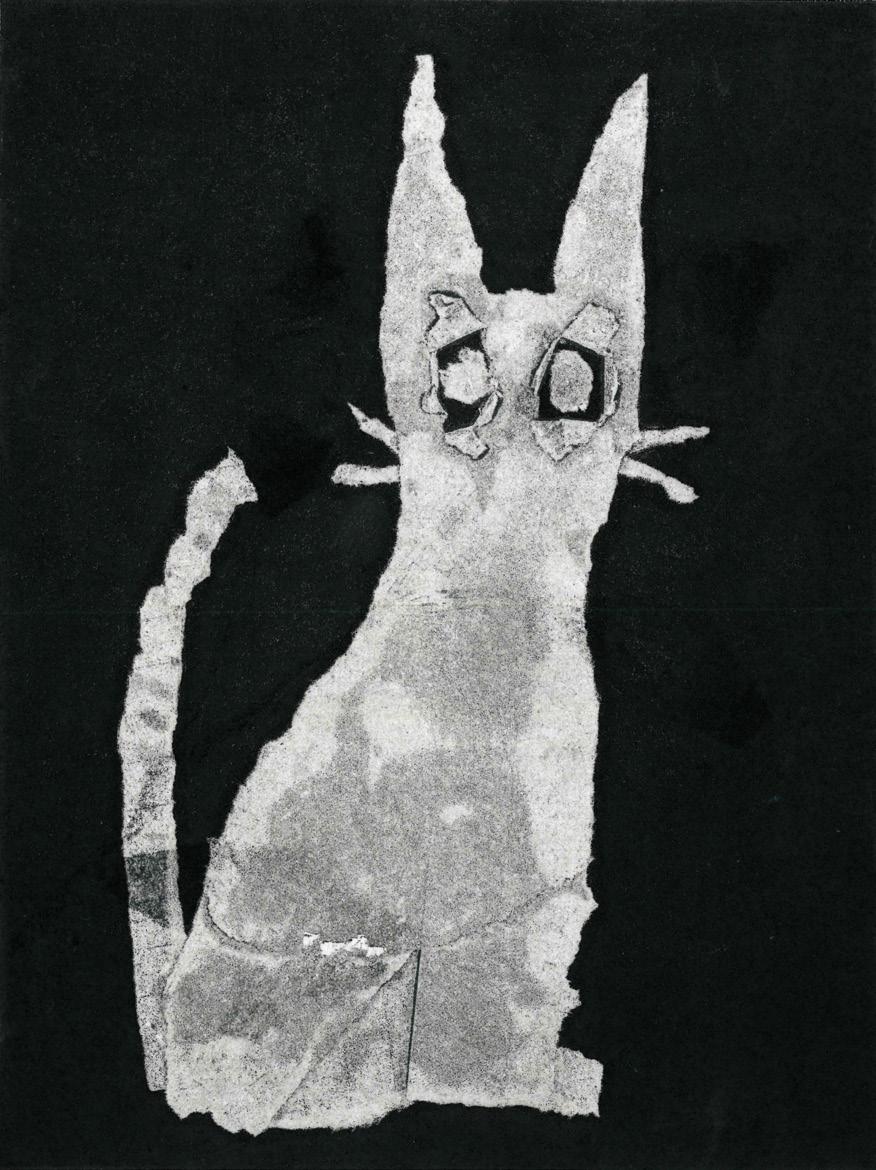


8 THE PLANT TOWA DI PROFIO @call_me_myliege CURATED BY MIA GUELI Visual Arts Editor MIA GUELI @miag.draws @1eft.sock

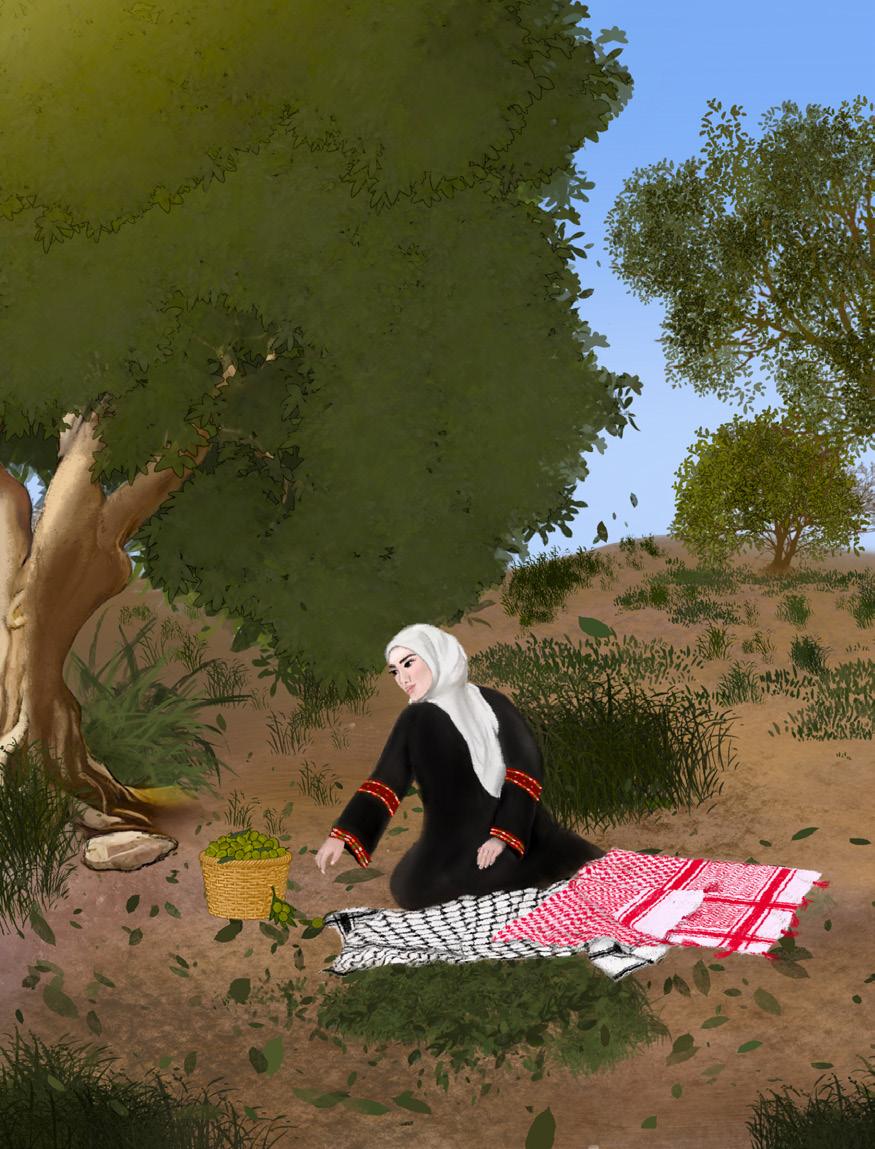
VISUAL ARTS 9
AURÉLIE MOUTIEN @aurrreelie
MAISEM ALWAHB
Embellishing Gen-Z Through ARTZ-SHOWCASE
VICTORIA ORMISTON,
Leilah Doyle and Leila Pozzi Contributors
Students sometimes live in a bleaker world than most, stuck in an infinite loop of assignments, long commutes and unavoidable circumstances. Art becomes the only way to add colour to the lives of those who need it the most. Unfortunately, a career in the arts is often seen as unsustainable, which discourages students from pursuing their passions. However, the students who do choose to remain creatively active in para-academical arts often struggle with the lack of bilingual opportunities.
Many things kill creativity: comparison, competition, and, most importantly, censorship. By creating competitions, contests and showcases exclusive to artists of a certain language or program, we are barring and censoring students from expressing themselves creatively on a platform. We are choosing to disproportionately represent certain artists while simultaneously leaving the same ones unrecognized. This unequal treatment also makes it difficult for younger students to develop a sense of belonging in certain spaces, which intimidates them from ever showcasing their art. These futile and surface-level problems are not at the root of creation: xpression, resistance and emotion are the true soul of artistry’s body.
This is exactly why we created ARTZ, a platform encouraging and supporting post-secondary students in their artistic and academic endeavours. ARTZ strives to host a yearly intercollegiate variety show welcoming students from diverse artistic backgrounds to bask in its beaming lights for a one-night-only event. This event is an opportunity for students from various academic backgrounds to gain experience in their designated fields by contributing to the ARTZ showcase committees. Furthermore, the ARTZ showcase is a nonprofit event that donates its revenues to a different cause each year to represent as many communities as possible.
ARTZ is founded by three different students with completely different backgrounds. Despite our differences, one thing united us; Art. Here are our stories.
Leilah: During my last year of high school, I wasn’t sure which path to follow. I knew what my passions were, but I felt as though attempting a career in music would only guarantee me a life of struggle. As a musician’s daughter, I knew firsthand what
that reality entailed, so I decided to chase a different dream. Though I left behind this idea of fame, I never stopped loving the way the last chord of a song rings out into the audience. That is why I helped create ARTZ. I am just one of many students with artistic talents who fear the consequences of a life where they pursue uncertain dreams. Today’s society has expectations, and the reality is that success is not easy and not always possible. ARTZ allows students to experience one night of stardom, one night to see what a life of glitz and glamour could be like.
Leila: That feeling of taking what I thought would be my last ever bow at the end of a dance show is what made me rethink it all. I have been dancing since I was six years old and even studied dance in high school. All those after-school hours practicing dances, trying on costumes, and just lying down on the stage, had become a part of who I was. That being said, climate change and activism were also very important to me. Even though I decided to study social change and solidarity, I knew I couldn’t give up my passion. ARTZ became the perfect plan to ensure that students like Victoria, Leilah and myself didn’t need to just throw this dream away. It became the way I could find a balance in my life and provide opportunities for students alike.
Victoria: I like to believe that my whole
life has been one big canvas. As a child, I had a very vivid imagination because my father believed I should learn to read books instead of riding bikes. When I did learn, he not only took me on bike rides, but [on] adventures in Neverland, the gloomy streets of Manchester and the deep waters inhabited by the Loch Ness monster. Through my love for reading, I developed an appreciation for all things in the visual arts, because I could never paint or draw, myself. My lack of talent in that artistic department made me eventually find the thing I love the most: dancing. Although I have been dancing for as long as I could read (Thanks mom!!), I only started taking it seriously in 6th grade, when I joined my first competitive team. Dance grew up with me, it gave me consistency and helped me develop skills I even use academically. My love for dance, the arts and activism led me to co-create ARTZ. I believe ARTZ will be able to showcase systemically underrepresented stories and inspire a whole new generation of artists to keep pursuing their passions.
Our stories are only a few of hundreds that deserve to be told. If you want to be a part of the movement, come join us for a night of fun on May 2nd from 6-8:15 p.m. Tickets will be sold at Dawson College, online through our Instagram @ artzshowcase, and at the door.


10 THE PLANT
ARTZ SHOWCASE INSTAGRAM
PAGE
Saving Cinema Doesn’t Mean Saving Hollywood
MIRREN BODANIS Editor-in-Chief
Dune: Part Two released on March 1st, 2024, to immediate smash success. It currently holds a 93% critic score on rotten tomatoes. “Denis Villeneuve’s monumental adaptation expands its extraordinary world of shimmering strangeness. It’s impossible to imagine anyone doing it better,” writes The Guardian chief film critic Peter Bradshaw. This extreme critical success is mirrored in its incredible box office performance. In its opening weekend, it grossed 82.5 million USD, surpassing Oppenheimer’s 82.4, and, as of April 5th, has grossed over 630 million USD worldwide, according to IMDb.
The success of Dune: Part Two has greatly pleased both moviewatchers and studio execs. The results from searching “dune part 2 video essay” are filled with titles like “Why Dune Part Two is a SciFi MASTERPIECE,” “Dune Part 2 is a Monumental Achievement,” and “Dune 2 is a Wake-Up Call for Hollywood.” In the latter, popular film YouTuber captainmidnight expresses how we need more films like Dune, which combine large budgets with serious, auteur, “high-art” filmmaking craft, to “save hollywood’’ from the endless stream of risk-free & sanitized sequels and spinoffs that dominate theaters. “These boring, squeaky-clean house styles have to go,” says captainmidnight. “Dune: Part Two, and really both Dune films, I hope, mark a sea change in how studios think about these big budget projects. [...] Standing out from the crowd with a distinct, interesting visual style will be more important than ever if you want your movie’s box office returns to look more like Dune and less like Madam Web.” (Which bombed at the box office, making only 15 million in its opening weekend on an 80 million dollar budget.)
It does seem that, following Barbie and Oppenheimer, Dune marks a third big success in a trend of huge hollywood’s studios giving auteur directors the reigns to make cinematically unique projects. It seems that popular media is suggesting that the days of endless product films of the MCU, DCU, and other interactive Disney media properties and their imitations are gone, and in are the days of real cinematic innovation. But what do we mean by “cinema” and “Hollywood” when we’re trying to keep them alive?
Despite critical success, the thematic progress of these movies has come under heavy criticism. In Barbie’s case, many have accused it of trying to sell feminism rather than advance it. Lovia Gyarkye, writing for the Hollywood Reporter, says that “[Gerwig] has successfully etched her signature into and drawn deeper themes out of a rigid framework, but the sacrifices to the story are clear. The muddied politics and flat emotional landing of Barbie are signs that the picture ultimately serves a brand.” Matel stock rose by a staggering 30% during the release of the film, and they have already commissioned another 45 films based on their IPs, according to Esquire
In the case of Oppenheimer, despite the film’s critical success, many have criticized its failure to represent the extreme domestic harm the film’s events caused. Kate Gardner, writer for Physics World, explains that “The one glaring omission from the film is in fact 19,000 omissions –the number of people, mostly Indigenous, who lived near the Trinity test site in New Mexico. Oppenheimer implies the area was empty, side-stepping the thorny truth that local residents were not warned about the test at all.” In an article for the New York Times, Buu V. Nygren, president of the Navajo Nation, explains how during the nuclear arms race 94 million gallons of radioactive waste were poured into Puerco
River, causing cancers, miscarriages, and deaths, all of which were glossed over by Hollywood. This was a meaningful omission for director Christopher Nolan, who himself described the film as aiming to depict Oppenheimer “trying to deal with the consequences of what he’d been involved with.”
Lastly, with Dune - even I, who’s favorite director has been and still is Villeneuve ever since I first saw Arrival 8 years ago, cannot deny the film’s problematic critique of colonialism, which fails to avoid many problematic colonial habits itself. Furva Shah, writing for Cosmopolitan, breaks down ways the film erases its Middle Eastern, North African and Muslim influences. “[Herbert’s original Dune book] was seen as a challenge to imperialism following the Algerian war of independence, with his editors even asking the author to tone down the ‘Muslim flavor’ of his book. Now, the latest adaptation, directed by Denis Villeneuve, seems to do just that,” writes Shah. “Despite the film’s obvious inspirations, there are no leading actors of Middle Eastern or North African heritage.”
Although Hollywood may be progressing visually, it is worth questioning whether these films are “saving” cinema, or if they’re just a new way of selling us what we had before in an artsier package. Instead of turning to the same old white men to save Hollywood, or women-lead movies that sell toys for white men - every year, thousands of unique, smaller budget, innovative films -the kind we supposedly want to see more of- are released. So maybe it’s not Hollywood that needs to be saved to save cinema, but, rather, it must be destroyed, and we need to stop expecting hyper-capitalist billionaires to be the ones to show us who we can be.


11
PHOTO VIA FORBES
ARTS & CULTURE
Interview With Atwater Lady: Rita’s Story Uncovered
KHADIJA FATIMA Copy Editor
MARYAM HUSSAIN ASGHAR Staff Writer
“As-salamu alaykum, madame,” resonates through the air at the juncture of Atwater station and Alexis Nihon. There, ensconced in her chair, sits a woman draped in red against the drab backdrop of urban decay. Crutches lie dormant by her side, silent testament to a story untold. She is a fixture here, positioned perfectly to catch the tide of humanity that flows past her daily. To engage or to ignore, to see or to look away — she is a reminder of the stories we choose not to hear, the lives we inadvertently sideline for something always just beyond the next turn.
The Plant, dedicated to bringing to light the stories of diverse and often unheard individuals, captures the story of the “Atwater Lady” through a direct interview. To overcome the language barrier and ensure her story is accurately represented, Google Translate was leveraged, allowing her to comfortably express herself in Italian, her preferred language.
What is your name? How would you like to be addressed?
Interviewee: Rita. She goes on to repeat her name with an emphasis on the “R” being rolled properly, inviting the interviewers with a smile.
How old are you?
Rita: I am 60 years old.
What is your story? What caused you to end up in this situation?
Rita: This is how I provide for my kids. The money goes to buying diapers and towels for my children. I also need to pay the doctor for physiotherapy.
How long have you been at Atwater on a regular basis?
Rita: I have been here for the last six years. She shows six fingers.
Do you have a family that you have to provide for?
Rita: I have seven kids, the youngest being only one year old, and the oldest being eight years old. They don’t go to school.
This is how I provide for my kids. The money goes to buying diapers and towels for my children. I also need to pay the doctor for physiotherapy.
Is there anyone that can help provide for you and your children?
Rita: Yes. My household consists of my husband, and six more women. In total, there are 18 children. We all live together as rent is expensive, standing at about $1 000 per month. While I’m here, the other women stay with the kids.
Would you like to tell us more about your injury seeing that you use crutches?
Rita: I have arthritis. My knees are swollen, my finger joints hurt, my back hurts, my neck hurts. I need this money to see the physiotherapist. It is difficult to walk upright without my crutches. She lifts her garment to reveal two band-aids on her left leg between which lay a severely inflamed knee. She follows this by holding up her fingers’ bulging knuckles, further showing signs of arthritis.
Why Atwater? Why did you not choose any other metro station?
Rita: Atwater has a lot of pedestrian
traffic. She pauses and gestures to the foot traffic entering and exiting Alexis Nihon by its metro entrance, bringing her point home.
What do you think about Quebec’s way of handling homeless people?
Rita: Quebec does not help much. The [financial aid] does not cover the costs of living. You know, I can’t even travel back to my country. One plane ticket costs 10,000 euros — not dollars. It costs 4,000 per child which is quite costly.
How can we, Dawson students, further help you?
Rita: Donating a bit if you ever walk by would be very helpful. She asks the interviewers to buy her a pack of pampers in size 5 from Pharmaprix if they wish to help, dismissing the money at that instance.
Rita’s story at Atwater illuminates that encountering individuals begging on the streets is a visible manifestation of the complex and multifaceted issue of homelessness, one that is deeply rooted in systemic failures and societal challenges. These transcend simple narratives of personal failure, highlighting instead the critical intersections of affordable housing shortages, inadequate social support systems, healthcare accessibility, and the unique hurdles faced by immigrants and refugees.
Each person begging on the street has dignity and humanity despite their vulnerable situations.
This is a tribute to the overlooked tales of the rising homeless population, echoing through the silence of empty Tim Hortons cups and the hurried glances of morning commuters.


12 THE PLANT
***
PHOTO VIA RAIL FANS CANADA
Alpha Males With Podcasts: Redefining Masculinity
MARYAM H ASGHAR Staff Writer
Information has never been more accessible than it is today, in a period of technological advancement. Blogs, YouTube Channels, social media platforms, and podcasts empower individuals to share their thoughts, opinions, and ideas. Amongst these voices are “alpha” males: strong, confident, and assertive men, particularly making use of podcasts to share their ideas — ideas that impact young boys’ perception in regards to masculinity.
The Cambridge Dictionary defines an alpha male as “the most successful and powerful male in any group,” also noting it can mean “a strong and successful man who likes to be in charge of others.” ’Whilst these appear as appealing traits of being driven, tenacious, natural leaders, the modern alpha male often exhibits toxic masculinity, taking those otherwise positive qualities to the extreme, letting competitiveness turn friends into enemies, stepping over others to serve their ambition and allowing aggression to emerge in inappropriate ways according to Forbes.
Toxic masculinity, while taking upon traditional traits of manhood, not only harms men by dismissing their emotional expression and their authentic selfexpression, but affects women as well, by associating traditional gender roles and views with them. Women are therefore seen as “inferior” and may be diminished, oppressed, silenced of their voices, and objectified. In other words, toxic masculinity leads to misogyny.
As podcasts and most streaming platforms are available to all audiences, young boys are susceptible to landing on content from alpha male podcasts. According to Edison Research, forty-six percent of young children, aged 6 to 12, in
“Children are great imitators. So, give them something great to imitate.”
the U.S. have listened to a podcast at least once. Bearing in mind that children’s brains are highly impressionable, observation and role models can affect a child’s behaviour, mindset, and development. In light of these observations, it is beneficial for young boys to keep role models that embody healthy expressions of masculinity with whom the young man may be empowered while learning to respect oneself and those around him. As the American psychologist Albert Bandura said: “Children are great imitators. So, give them something great to imitate.”
The goal is not to erase masculinity, but to protect it; to protect men’s selfexpression, and to protect women as well by deconstructing misogyny. In a world where alpha male podcasts share thoughts such as: “Women preserve their value, men create it” (The No Filter Podcast); “If my wife lets herself go after I have kids with her, I’m gonna tell her once: ‘Get your shit together.’ I still wanna be sexually attracted to my wife, my spouse. If you can’t do that, I’m out” (No Filter Podcast); or even “A key that opens any lock is a master lock. A lock that opens to any key is a shitty lock” (Myron Gaines, FreshandFit Podcast), masculinity has been taken out of context, turning it from a symbol of strength and leadership into a toxic ideology that harms both men and women by creating vile gender stereotypes. To create a better world for young boys and women, masculinity should be reconstructed with empathy and integrity to become a source of empowerment for young boys.


13
VOICES
PHOTO VIA X.COM
I owe my Broken Heart to Virginia Woolf
EMMA CASPI Voices Editor
Virginia Woolf broke my heart, but let me start from the beginning.
“Mrs. Dalloway is my favourite novel,” said my fellow interviewee during our joint interview for a bookstore. The book you chose was supposed to reflect, in part, who you are. I remember being confounded by her response, unsure if she had understood the question correctly. Why would anybody in their right mind choose Mrs. Dalloway to present yourself in an interview? Let’s just say that since I was so focused on her supposed poor decision, I did not get the job.
Even before the interview, as a little girl, I kept hearing about Virginia Woolf and what an incredible writer she is. She was frustratingly ubiquitous: bookstores, school curriculums, and magazines promoted her, praising her quotations and peculiarities. So many people raving about her could not be wrong, right? To my younger self’s dismay, her writing style was convoluted and disorganized, which made me question those who commended her. Reading her passages resulted in pounding headaches and dazed confusion, which took me weeks to recover from. How could a meagre piece of literature destroy me so? I asked myself why I could not enjoy Woolf’s novels like the others. Ironically, I was.
Finally enlightened about Woolf’s ways, her genius is nothing but self-evident. I have built a strong affinity with her prose, which mimics, to an extent, what we secretly are as

In 200 pages, Virginia Woolf effectively encapsulates the complexities and sophistication of the human experience and reveals the actualities of human consciousness through her modernist novel Mrs. Dalloway
a society. But, firstly, who is Virginia Woolf, and why should we care about her novels? Adeline Virginia Woolf, born in 1882, was one of the most prominent modernist novelists and essayists of the 20th century.
After completing a series of novels, Woolf wrote Mrs. Dalloway in 1925. In this novel, she raised important and stigmatized subjects like feminism, homosexuality and mental illness. On the surface, Clarissa Dalloway, the protagonist, is bland and, at times, gruesomely bleak, living the average life of a 52-year-old upper-class woman in London, who is actively recovering from The Great War. However, it is simultaneously like nothing you have ever read.
The novel takes place during one day, focusing on Clarissa Dalloway’s inevitable party she is preparing. Along those alleged mundane lines hides the hefty substance of the novel: Clarissa Dalloway’s infatuation and passion for her old friend Sally Seton, the sufferings of the shell-shocked soldier Septimus Smith, the romantic and aspirational longings of Peter Walsh, and Doris Kilman’s trying hatred towards Clarissa.
So the reader can access the character’s interior monologue, Woolf writes in a stream-of-consciousness prose style; she writes humans as they are, with no polishing and perfecting. Typical of modernists, Woolf departs from strenuous details of the world and clear-cut storytelling to accurately define and vivify her characters. Why should we nevertheless engage in such a complexly written novel?
Considering that humans feel, seek, strive, and, most importantly, pursue other humans, we cannot deny that we are complex creatures. Woolf, however, understands the frustrating partitions between humans outside of ourselves:
the mind. In 200 pages, Virginia Woolf effectively encapsulates the complexities and sophistication of the human experience and reveals the actualities of human consciousness through her modernist novel Mrs. Dalloway. Understandably, Woolf’s style speaks the ugly truth of what we are and weakened me as a young girl.
I could not handle the thought that we were all engaged in our thoughts, utterly alone and mostly frightened (or, at least, I was). Based on our mind’s ponderations, the world’s reality shifts, making it an unreliable source to explain human nature - hence Woolf’s focus on the reality of individuality and cogitations of her characters. Her diaries reveal how her method of characterization, which Woolf referred to as a “discovery,” now referred to as a “tunnelling process,” came to fruition:
“I dig out beautiful caves behind my characters; I think that gives…humanity, humour, depth. The idea is that the caves shall connect, & each comes to daylight” (Diary II: 263)
I was once ignorant about the human race, the idiosyncracies we all hold introspectively and our individual ‘caves.’ This innocence has nonetheless passed: I can no longer rub shoulders with a stranger on the metro, greet a friend, or stare blankly into a crowd without wondering about what they are wondering. I am no longer afraid of being alone but terrified of constantly being somberly accompanied by other ghostly minds. I wish to rip this ill-fitted and unsightly beating heart, which is perpetually on the cusp of shattering asunder, from my chest. Woolf made me more human if that is even humanly possible, and it hurts, hurts, hurts. But the pain is transformative, not debilitating; like seeing the light after years in darkness. How good it feels to bathe in sunlight.
Respectively, I owe my broken heart to Virginia Woolf.

14 THE PLANT
VIA THE NEW YORKER
PHOTO
Small Events
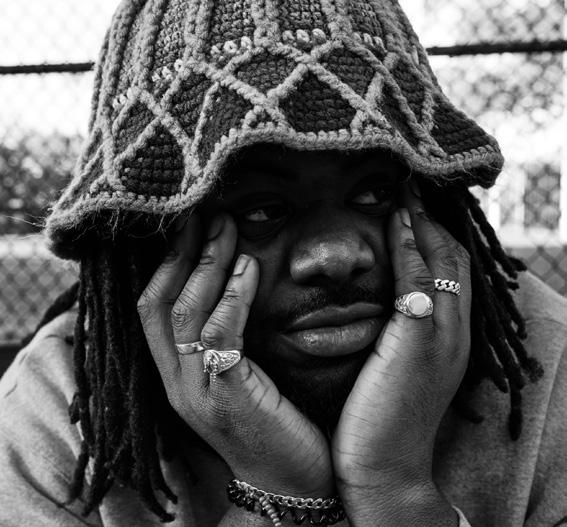


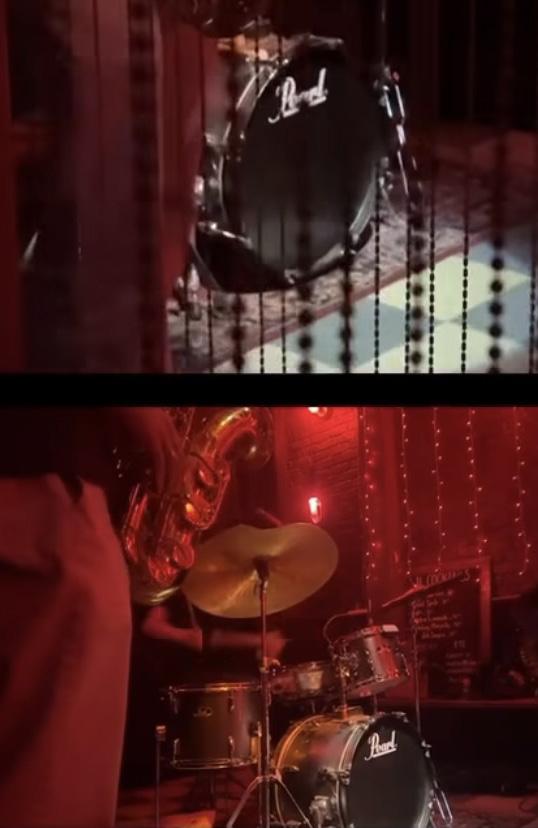
MIKE
When: 19 April 8:00 p.m.
Where: Théâtre Fairmount
Price: 38$
PHOTO VIA INTERVIEW MAGAZINE
Rachid Badouri
When: 25 April 8:00 p.m.
Where: Centre Leonardo Da Vinci
Price: 30$
PHOTO VIA CBC
Oneohtrix Point Never
When: 29 April 8:00 p.m.
Where: Fairmount Theatre
Price: 57$
PHOTO VIA ANOTHER MAGAZINE
Inspired by MF DOOM and mentored by Earl Sweatshirt, MIKE delivers candid, keen, and reflective depictions of the inner machinations of a soul haunted by grief and self-discovery. Slowly graduating from the underground hiphop scene, he remains a trailblazer in his unique rambling rapping style over syncopated and woozy vocal and percussive samples.
Though heavily lauded in Québec and France, Rachid Badouri has committed to conquering the English audience in this performance in his native Montréal. His contagious habit of approaching sensible topics with humor is reflected in his various impressions and sudden bursts of passion as he recounts the tales of his childhood as the son of Moroccan immigrants. Humble and loving, his ability to disarm audiences with the charm of his smile truly dissolves language barriers.
Seminal electronic musician OPN impressed underground circles with the cult album Replica and experimental project R Plus Seven. As the composer of the score of the Safdie brothers’ film Uncut Gems and the executive producer for the Weeknd’s Dawn FM, he is amply deserving of the title of master of his craft with his unique synthesizer and vocal-led compositions.
Barbossa Redroom Jazz Night
When: Mondays and Tuesdays
Nights starting at 8:00 p.m.
Where: Barbossa Bar
Price: 5$
PHOTO VIA @MALIKFILMSS
Music university students, jazz enthusiasts, and nightcrawlers alike assemble in the intimate, starkly-lit atmosphere of this iconic St-Laurent bar. Trios, quartets, and quintets explode in fast-paced double-time swings, dwindle in blue musings and swell up in intricate grooves. Seasoned performers succeed each other in rapid succession before the stage becomes open to any wandering musician willing to try their hand at improvised jam sessions until late at night.
15 SMALL EVENTS
Op-Ed: Zionism Needs To Go
DORJI DHATSENPA Contributor
In the early hours of April 9th, 1948, fighters from the Irgun, a terrorist paramilitary Zionist group, set off for the village of Deir Yassin.
According to the Interactive Encyclopedia of the Palestine Question, Deir Yassin was an entirely civilian and prosperous Palestinian village who signed non-aggression pacts with neighbouring Jewish villages, such as Givat Shaul in the wake of the ongoing civil war. Mordechai Gichon, a Haganah intelligence officer at the time, would even go on to state in the Nakba documentary, “1948: Creation and Catastrophe” that, “[Deir Yassin] was completely peaceful.” A peaceful coexistence between Palestinians and Jews is unthinkable according to the Zionist narrative of uncivilized Palestinians.
Zionist fighters attacked and left 110 Palestinians from an entirely civilian and peaceful village dead. According to Charles D. Smith – a historian at the University of Arizona – bodies were thrown down wells, grenades were thrown into homes, and civilians were mutilated and had their body parts cut off. Otthman Akkel recalls the Deir Yassin massacre in the documentary saying, “They hit Haj Ahmed on the head and took [his] child and threw him into the oven. [...] Then they took the father and threw him after the son. They told him, ‘Follow your son.’ [...] I started running.” The documentary then covers the survivors of Deir Yassin, who were hauled onto Irgun trucks and paraded around the streets of Jerusalem, where Israeli spectators mocked, stoned, and spit on these villagers. The accounts of Deir Yassin spread like wildfire among Palestinian villages and would only serve to accelerate the Nakba, the ethnic cleansing of Palestine.
Yet, as the right to self-determination is enshrined in international law, it comes at a great irony that Jewish self-determination comes with the arrival of The Palestinian Question in Israel and, most notably, that this level of violence is normalized and sanctioned by the Global North
Palestinian armed resistance is consistently viewed in a vacuum, isolated from the Zionist ideology and regime that creates and condemns it. Despite the moral immunity and victim identity Israel feigns when faced with such forces, we must not forget Israel is the active instigator by depriving an entire people of their right to live. Israel, through its escalation of colonial violence against civilians over the decades, has made the horrors of October 7th an inevitable reaction against this violence.
Deir Yassin is only one example of Israeli-sanctioned violence against the Palestinians, and now with the genocidal campaign of “self-defence” that Israel has launched on Gaza, the horrors of the Nakba that Palestinians have faced under Israeli occupation have finally been revealed for what they really are: the unfolding of a settler-colonial genocide. Israel, since October 7th, has been documented by the press as carpet bombing the Gaza strip, shooting and blocking civilians who seek humanitarian aid, endorsing genocidal policy and rhetoric from the highest levels of its government, and engaging in mass dispossession and expulsion of its subaltern population.
The only path for justice in the Middle East is an end to the Zionist occupation, an apartheid state whose end goal is the extermination of its colonized population. For Jewish readers, this may sound like a call to deprive the right

to self-determination, and possibly an incitement towards anti-semitic violence. Yet, as the right to self-determination is enshrined in international law, it comes at a great irony that Jewish self-determination comes with the arrival of The Palestinian Question in Israel and, most notably, that this level of violence is normalized and sanctioned by the Global North. This hypocritical discourse surrounding the Jewish right to self-determination, with its frequent weaponization of the Holocaust to silence valid criticisms of the State of Israel, can very easily be broken through by asking ourselves the simple following questions.
If the Jewish people achieved selfdetermination through the UN 1948 Partition Plan, why did Israel, according to a video by Vox, annex and bomb Jordanian, Syrian, and Egyptian territories? If the PLO and Hamas are the sole reason for Israel’s violence against Palestinians, then why did Deir Yassin happen? If four Palestinian children were shelled dead after playing hide-and-seek in a fisherman’s wharf, why did Israel lie and say they were Hamas, according to an article in The Guardian? And why has Israel, according to an article in Medeaite bombed and destroyed all functioning hospitals in Gaza, executing civilians point-blank in its wake?
Zionism, in its plain historical form, is a matter of genocidal aggression against its settler-colonial subject. We have seen it in the massacre of Deir Yassin and now in the continued indiscriminate bombings of Palestinian civilians, under the pretext of fighting terrorism. We cannot afford to let this become an ambient genocide as Israel shows no signs of cancelling a Rafah offensive and, although governments are globally beginning to cave under public pressure, it is simply not enough.
The Zionist occupation needs to go and Palestinians need all their land back. We cannot wait for Palestinians to be memorialized in al-Nakba museums to act on our moral conscience. Viva intifada

16 THE PLANT
PHOTO VIA AL JAZEERA
Faith or Career?
SAIMA MAZUMDER Contributor
Bill 21: a dystopian law that dictates the rights of Quebec minorities and limits their religious freedom.
The province of Quebec has just reinstated Bill 21 for another 5 years and, in addition, has officially demanded English school boards to implement the law in their public sectors. When the Bill was originally put in place in June of 2019, it excluded English school boards. That is no longer the case.
This brings to mention that Quebec is not short on problems concerning the education sector.
The province is currently facing a massive teacher shortage. As of August 2023, Quebec is around 8500 teachers short, as confirmed by our Education Minister, Bernard Drainville. As of recent news, the government is asking non-licensed adults to step in to teach, in hopes that they will eventually learn to love the job and get their license.
In times like this, the province’s top priority should be maintaining a proper education for children and young adults. Therefore, how can the province afford to discriminate against a whole group of people?
Truthfully, they can’t. However, that has not stopped them.
Bill 21 is a Quebec law that prohibits people who wear hijabs, turbans or any other religious symbols to work as public servants. Many Quebec citizens are outraged, claiming that this Bill goes against citizen’s rights to freedom of religion.
“Every person is the possessor of the fundamental freedoms, including freedom of conscience, freedom of religion, freedom of opinion, freedom of expression, freedom of peaceful assembly and freedom of association”, states LegisQuebec.
According to the Human Rights Charter, this bill deliberately limits the rights of a person who wears religious attire. Quebec’s National Assembly claims that this law is for Quebec to maintain its secularism.
However, Khalilah Bilal, a 19-yearold Muslim nursing student at Collège de Maisonneuve disagrees.
“I think that they’re very hypocritical. They are very strict with certain groups of people...like Muslims, but they lack any rules for others. In fact, right in front of my high school, there is a giant cross. You can’t expect us, as teachers, to not wear hijabs
in schools, but then have students go to schools with huge crosses.”
Quebec is everything but secular. Ask yourselves, why do we have the day off on December 25th for Christmas? Some may defend, saying that it was the day Jesus Christ was born. And Easter, similarly to Christmas, is one of the holiest days for Christians.
Nevertheless, “...persons must maintain proper regard for State laicity in exercising their fundamental freedoms and rights” claims The National Assembly of Quebec, in Bill 21.
Despite all of this, the most this law has achieved is creating an increase in violence, both physical and emotional, towards visible minorities.
According to a survey conducted by the Association for Canadian Studies, between May and June of 2022, there has been a significant increase in hate crimes, such as spitting and pulling off the hijab. These acts of violence have risen to 66.7% since this law was put into effect.
“I think it’s very limiting for a lot of people. I wanted to be a teacher before going into nursing, really bad. It was my dream job. The bill went into place right before I went into Cegep so it derailed my entire life”, expresses Khalilah.
This in itself proves how this bill is interfering with lives and is ruining the lifelong dreams of children and young adults who have dreamt their whole lives to work in these sectors. This bill is asking young teenagers to choose between their faith and their careers.
When asking Khalilah about whether or not she believes this bill will affect future generations, this is what she had to say: “I think it’s important to see different people, from different backgrounds, as kids. It’s really important for kids to see Hijabi women, Jewish men, or Sikh men, etc and learn that people are different. It’s important to teach them that this doesn’t make them less human.”
Is this the example that Quebec is trying to set for its children? That if you are among those who visibly portray their faith, your opportunities will be significantly limited?
It is 2024, and it is time for Quebec to rethink and question its priorities, especially in the education sector. These children that they are influencing are the future workers and leaders of society. If they continue to be taught to discriminate against certain people at such a young age, then there is no hope for an inclusive future.

17 VOICES

18 THE PLANT Playlist by MIA GUELI Visual Arts Editor
A History of Drinking and Party Culture in Universities
GLORIA BADIBANGA Staff Writer
University seems to be a very pivotal time in life for several people. Not only is the age when most people start university seen as a transitional period to adulthood, but for many, it also allows them to move away from their parents for the first time. University, for many, can also be seen as the last opportunity for fun until you get into the “real world.” With this comes a new sense of freedom and a new load of responsibilities.
A subtle shift occurred when elite families sent their wealthy sons to universities. Oftentimes, these wealthy sons weren’t actually interested in academia; rather, they were more eager to use a diploma to validate their families’ accumulation of riches and status. These students were a lot harder to control and discipline.
Subsequently, in the 1800s, fraternities emerged, boasting of their elitism and promoting a wild and irresponsible way of life. This was nowhere near the party culture seen in universities today since most universities weren’t co-educational spaces
Oftentimes, these wealthy sons weren’t actually interested in academia; rather, they were more eager to use a diploma to validate their families’ accumulation of riches and status. These students were a lot harder to control and discipline.
One thing that many universities across the globe have in common is the presence of party culture, more specifically in regards to drinking. Most students who haven’t consumed alcohol before attending university will most likely do so for the first time during their university experience. How heavily “party culture” is linked to a university is influenced by many factors, such as the location and the general habits of the people who make up the student body of the institutions. While enrolled in postsecondary education, some students might drink excessively, while others may not drink at all. Regardless of the disparities, not many take the time to think: “what led to drinking and party culture being so heavily associated with universities in the first place?”
In the last 300 years, party culture in universities underwent many changes to become what it is known to be today. During the colonial era, most people who attended post-secondary institutions were middle-class white men studying to become ministers or professors. Back then, universities had strict rules, were a lot more controlling concerning the students’ lives, and students were subject to punishments and penalties in any instance of deviance. Essentially, during this time, despite no longer living with their parents, students were seen as the university’s responsibility, which isn’t the case anymore. The “parties” that would occur during those times more so ressembled formal party dinners, where the universities would need to be notified, and there would often be some level of supervision.
until the 1960s, and most of the “parties” that would go on during this time were still quite formal.
With historical events such as the two World Wars, most social events, gatherings, and “parties” were practically non-existent on campus throughout the 30s and 40s. The majority of people left on campus were women, while most men were in service for the army.
Drinking and party culture in universities took a drastic shift in the 1960s with the “sex revolution.” This is where the party and drinking culture present in many universities today became possible. Students were regarded as being responsible for their behaviour rather than universities, like once in the past, and now students could go and do as they liked without fear of facing harsh disciplinary action from their classmates or school for the first time. The lack of supervision and the increase in freedom made drinking a common
behaviour among many students in postsecondary schools. It’s also important to keep in mind, that back then, the drinking age in the United States was inferior to 21 in over half of the states.
As previously mentioned, before the 1960s, a lot of universities were not only segregated by race but also by sex. Due to this shift in social life, parties could now be held inside a single dorm or even on a single floor instead of requiring students to plan gatherings at an off-campus residence or fraternity, which led to parties in universities being something frequent on campuses.
Media, mainly television, movies, and certain genres of music, also influenced students to copy the partying behaviours portrayed on the screen and find inspiration from lyrics talking about “party adjacent” matters such as drinking and sex.
The roots of drinking and party culture in universities aren’t extremely clear since drinking has been prevalent in society for thousands of years. However, the origins of party and culture drinking we see today in most post-secondary institutions seem to stem from university students from the 1960s and 1970s seeking liberation and a sense of freedom through rebelling.
Today, many people enter universities where drinking and partying are a given, regardless of whether they decide to partake or abstain from the culture. Whatever the reason may be, whether that be stress, social pressure, or trying to cope with personal problems, it’s important to remember that irresponsible drinking can come with a string of long-term effects and that there is a distinction to be made between stepping beyond your comfort zone for long-term benefits and doing something discomforting only to “fit in.”


VOICES 19
PHOTO VIA THE INDEPENDENT
Ralentissement du Service: The Devastating Neglect of Protective Barriers for the Metro
SABINA BELLISARIO-GIGLIO News Editor
Trigger warning: this article talks about suicide and suicide attempts. It has almost become a long-standing Montreal tradition. Whether you are on your way to class or work, it seems like almost a weekly occurrence to hear those infamous words;
system. Whether you pay the $3.75 fee, or find other ways to get past the turnstiles, the metro system becomes just as accessible, and dangerous, as these bridges. Le Devoir reported that suicides attempts have been the cause of “21.3 [interruptions] per year since the start of 2015.”
The STM’s long promise to install protective platform barriers in its stations came after a record year of interruptions on
The project that was put in place to build these protective doors in some stations on the Orange line was quietly shelved, despite the STM being promised roughly $200 million in provincial funds in order to fund the project.
“Ralentissement du service sur la ligne verte, d’autres messages suivront.”
The announcement is always preceded by groans of frustration, with passengers either leaving the cart or being ushered out by STM constables. And, for a while, I felt the same. I wouldn’t call the treacherous journey of getting from Westmount to Anjou entertaining, but there came a point in which that feeling of annoyance shifted to dread and sorrow.
Each code broadcast through the intercom system, whether it be the most common codes like 60 or 6, or the codes in the 900s, have meaning. Leo Blanchard published an article to the Montreal Compass in 2017 detailing these codes. The codes in the 900s detail emergency codes, the ones typically used during the long interruptions. While they cover many different emergencies, there’s one code in particular that stands out: code 904: suicide attempt.
This act of suicide is, unfortunately, not uncommon. The Los Angeles Times reported that the Golden Gate Bridge has over 1,800 deaths linked to it. The Globe and Mail reported in 2003 that “an average of 45 people try to kill themselves by jumping off the Jacques Cartier Bridge each year.” These two places share something in common: their accessibility. While intended to facilitate travel across bodies of water, the grim reality is that these locations often become hotspots for those overwhelmed by the burdens of life.
Operated by the Société de Transport de Montreal (STM), the metro system in Montreal connects 68 stations across the island and aids residents and tourists alike in traversing the island via the underground
the subway system in 2017. CBC reported that there were 1,171 interruptions that lasted five minutes or longer. In the past, the STM estimated that the installation of these barriers would cost around $10-15 million per station.
However, The Montreal Gazette reported in 2022 that the project that was put in place to build these protective doors in some stations on the Orange line was quietly shelved, despite the STM being promised roughly $200 million in provincial funds in order to fund the project. The barriers were left out of the capital expenditure budget which covers from 2022-2031. A spokesperson informed The Gazette that the cuts to the budget were made in order to reduce debt after the financial difficulties of the COVID-19 pandemic. The STM’s details on its website that the budget is being used to “carry out major projects, such as the Bellechasse transport center, the Crémazie complex, the extension of the blue line and the electrification of bus network infrastructure and vehicles.”
Jérôme Gaudreault, the director general of the Association québecoise de prevention du suicide (AQPS), expressed the importance of these barriers to The Gazette
and emphasized their efficiency in saving lives. “Once they arrive [at the metro] and see that [taking their life is] not possible, most of the time, there won’t be a transfer of method... In general, they will reconsider their [wish to die], which will give the advantage of time for people to intervene, or for the person to seek help.”
Regardless of this decision, Canadians, especially teens continue to struggle with mental health issues post pandemic. Melissa Généreux, a public health physician from Quebec, shared to CBC that she has been surveying young people about their mental health in several regions of Quebec. In January 2023, she reported that 20% of the surveyed individuals had poor or bad mental health. While the number had decreased from 30% in 2022, Généreux stressed that it’s still “double what it was before the pandemic”.
In addition, Quebec’s homeless population has been steadily increasing. CBC reported that the number of people who were “visibly” homeless jumped from 5,789 in 2018 to 10,000 in 2022. Notably, 4,690 of those people were living in Montreal.
The STM’s collaboration with Center for Suicide Intervention (CRISE) to develop an AI tool for identifying stress indicators aiming to intervene before potential suicide attempts mirrors trying to apply a band-aid to a sinking boat. No matter the cost, it’s imperative that the STM stops throwing out empty promises and begins to actively help prevent these deaths that they’ve neglected for too long.

Suicide prevention and helpline by phone: 1-866-277-3553
Suicide Crisis Helpline: 9-8-8
By text: 535353
Tel-jeunes (for ages 12-17): 1-800-263-2266

20 THE PLANT
PHOTO VIA CBC
Duff Court Street
ANGEL DIAMOND Contributor
Duff Court Street in Lachine was my first ever home. I lived in the number 232 apartment with my parents and my older sister. It was an exceedingly small place, as the apartment only had two bedrooms. At night, you heard multiple insects creep around you, and it had very dirty walls that my parents would clean to get rid of the stench that built up. Since my dad would get paid 9$ per hour at a company named Maxx, which builds bathroom essentials, it was the only place we could afford at the time. We stayed there for five years, from 2006 to 2011, before moving out into a more comfortable place in Chateauguay. Once I turned three in 2008, my parents decided to put me into daycare. The reason they did this was because I was a very shy kid who did not speak to anyone other than my parents.
They also felt the need to send me there since my doctor at the time was convinced I had some sort of problem. “Your daughter might have autism,” said the doctor, “[and] there are too many obvious signs she is exhibiting.” The problem is: my father did not want to believe this. He knew I would grow out of my “shyness,” so he never accepted the children’s hospital doing any type of test on me.
The daycare I went to was called Le Jardin des Frimousses, it was just down across Duff Court Street, where all the drug addicts would throw up or smoke, where all the dirty garbage with dancing flies lay. That daycare was also the beginning of my family’s downfall in the neighbourhood.
Le Jardin des Frimousses was a daycare filled with children that I found very annoying. They would always try to play with me, but I would push them away by hitting them in the face, which would get
I was so young, not understanding that the reason why people treated my family differently was because of my skin color
me in trouble. It continuously smelled like a hospital, and the food they served always looked like it was made one year ago. The things I really enjoyed doing were watching Disney movies and leaving the place.
In the early 2000s, Lachine was not known for having a lot of immigrants. I was born in Quebec, but my parents came here from their respective countries, Ghana and Nigeria. There were only a handful of Black people, which made it rare for us to cross paths and, on my street, we were the only ones. At the daycare, my educators would make fun of me by judging my textured hair or calling me diverse types of names. “Wow, Angel, you are a very small monkey!” Miss Catherine said in French. Sometimes, they would make these types of comments in front of my dad, who would call them out on it thinking they would stop.
But, as soon as we got to our small apartment, the police would be at our doorstep interrogating my parents for a “crime” they committed. They would ask questions: if he was sober, physically abused my sister and me (apparently, my educators found bruises on me), and other types of questions. At the age of four in 2009, my younger sister was born, and we were running out of space in our little apartment. On top of that, our drunk neighbours would call either the police or social workers on us for no reason at all. Eventually, my dad got a better job, and we moved out of Duff Court Street far away to Chateauguay for a fresh start.

The Lachine I know now has changed from the one I knew back then: the daycare has closed, the streets are a bit cleaner, and my old apartment has been painted white. I definitely felt so many different emotions when I came back to that place because I was so young, not understanding that the reason why people treated my family differently was because of my skin color. But I feel very happy considering more people are immigrants who living in those apartments, and the fact that I will not be returning to that place anytime soon.

21 VOICES
PHOTO VIA GLOBAL NEWS
April upon us, with the semester picking up pace like you wouldn’t believe! If this year we were not cursed by freezing rain and five day power outages, we instead got to all observe the beautiful eclipse on April 8th. Nevertheless, April is a month that brings change, light, and hopefully some peace from the ravages of the cold, bitter past. Or at least, that is what I hope it will bring for everyone else. New opportunities will blossom, and hopefully keep on growing in the future… trust me!
EZRA BUCUR Creative Writing Editor
THE ECLIPSE
EZRA BUCUR Creative Writing Editor
There is an eclipse coming up, have you heard of it? Supposedly, the Moon will cover up the Sun, or so I understood it to be. It is crazy to think about... total darkness, in the middle of the day, but just for a few minutes! It seems like this event could only come back 200 years from now, lifetimes away from our grasp. Such a rarity, a precious treasure meant to be enjoyed to its fullest span. I heard it would be unlike anything I’ve ever encountered before. The stars will align: sparks would fly, the Sun’s halo captivating my entire being. He could make one go blind, drawn to his fiery angelic thrill. His hypnotizing deceit, alluring me closer and closer to him, consuming me whole. The Moon, cold, vigilant, loyal, blurring night and day all in one, tiptoeing a dangerous line. It is a phenomenon I could never explain, where all the words rush to my throat yet refuse to escape through pen nor sound. Impossible to rationalize, to die down, to throw away.
Is this really only but a moment in my lifetime? Was it all there was to be? I pray it wouldn’t be the One, the only chance I was given. Despite it all, as I extend my body to the emptiness I wish to hold close, the eclipse plunges me deeper into darkness. One I will have no choice but to forever love.
22 THE PLANT
THE ITCH
MIRANDA GALLEY
Contributor
I never liked going to church.
I hated the stuffiness in the air, the taste of the Body. I would stare at the paintings and the statues and think to myself, what is it like to be so consumed by art? What is it like to feel your guts churn and turn inside and out when you make an artwork like that?
I would feel envy, because I would look around and see everyone else so engrossed into mass. I, too, wanted to feel something, even if it was the most nauseating feeling.
I wasn’t sure when it started—the thoughts. The thoughts of wanting to be consumed, to consume—to rip someone apart like rotten fruit. I found that I much preferred sinking my teeth into bone than the communion. It was so humiliating, being made of flesh that was meant to be cherished and cared for but instead I feasted on. I would stare at the paintings in church, the ones of women suffering, in agony, and think how they are trapped in this moment of anguish. It reminded me of the life draining in those men’s eyes as I ate them like a predator catching their prey. They are the ones who trapped us there, after all.
I still come to church. But now, I ask for forgiveness. I beg for these thoughts to go away, to confirm if any of this was real or in my head. And yet, even as the priest forgives me for my sins, I can hear the way his blood runs through his body.
I feel my skin itch at the thought of it.
REARVIEW HINDSIGHT
KARA FUSARO
Contributor
I never liked going to church. I sat in your passengers seat, Spewing bullshit neither of us would remember. As if to fill the blank and soulless air, where music should be.
Every pothole your tires would hit, Was more expressive than you were. As if the worn out asphalt, Had more love to give.
If I was to spit torrid concrete, Layers of man made dirt grey: Infected air with words no less obsolete, Instead of the hope I found in my day.
What could I have done for you to stay?
If our world was a playground, I just needed a moment to play. You pushed and climbed the grey mound, Uphill battle, with your heart in neutral.
CREATIVE WRITING 23
GHOST ORCHID
CHRISTOPHER JAMES DIMITRIADIS Contributor
In hidden realms where moonlight wanes, And shadows dance in eerie strains, There blooms a flower, pale and rare, A wisp of bliss, beyond compare.
Its petals whisper secrets old, Of tales untold and legends bold, The ghost orchid, ethereal sight, A haunting presence in the night.
In swamps and bogs where spirits roam, It finds its home, its silent throne, A spectral grace, a spectral hue, A phantom’s kiss, a dream pursued.
Its roots entwined in ancient lore, It drinks the mist, it craves no more, For in its veins, the essence flows, Of ghosts and phantoms no one knows.
Its fragrance lures the lost and brave, Through marsh and fen, beyond the grave, A siren’s call, a whispered plea, To those who seek, who dare to see.
But woe to those who dare to pluck, This flower rare, this spectral luck, For in its touch, a curse resides, A haunting echo that never subsides.
So let it bloom in shadows deep, Where secrets lie and spirits sleep, The ghost orchid, forever bound, To realms where silence knows no sound.
24 THE PLANT
Can Football dictate one’s religion?
JADE GAGNÉ Sports Editor
The President of the French Football Federation, Philippe Diallo, and the federation itself have recently created controversy in France regarding their recent Ramadan policy. This new rule explains that team meetings, group sessions, and training sessions will not be modified regarding any player’s religion. Therefore, Muslim players at the training camps are not permitted to fast, and as the Islamic holy month ends, tensions are rising among athletes, coaches, and fans all over the world.
“You’ll see how quickly France changes its ways once they realize they can’t field on a good national team without multiple dual citizen French/African athletes. Muslim players have been and will continue to be a vital part of France’s success. Let them practice Ramadan in peace.”
“There is no stigmatization of anyone, there is absolute respect for everyone’s convictions. But when we are in the French team, we must respect a framework.”, said Diallo in an interview with the French newspaper Le Figaro
France is known for their legal principle of laïcité, which was created to protect the freedom of conscience and equality of citizens by discouraging any religious involvement or influence in government affairs and policy and vice versa. Having this principle made it easier for the FFF to make their decisions on the ban of Ramadan.
As far as the month goes, Diallo keeps on defending the choice of ruling out their players to do any religious practice by explaining that it’s simply a “principle of neutrality” and it is not an anti-Islamic act. In the same interview with Le Figaro, the federation’s president defends his decision by referring to Article 1 of the federation’s founding statute. This article
“I call this religious discrimination and we cannot act like this. Because if we do it for one religion, we must do it for all religions, and this is not the case today. We are divided when we should be united around this logic of religion and sharing,”
forbids any speech or display of a political, ideological, religious, or trade union nature in the federation’s competitions and events. If this is not respected, it can end up in a disciplinary or criminal proceeding. During a different press conference, he carried on with the argument that the “Muslim authority said that it was perfectly compatible with practicing high-level sport to suspend one’s fast.” The players have then no other choice but to respect the FFF’s rules.
“For a few years, Ramadan always happened after my basketball season, or before the championship. When those months happened, I was lucky enough to have coaches that would allow me to fast. When they weren’t necessarily fine with it, I still had the final decision. I never asked [myself]: ‘What if they ban fasting in the sport?,’” explained an anonymous national African/French athlete.
Unfortunately, this change in the Federation also caused the loss of a player. On March 21st, 2024, ESPN reported that the midfielder Mahamadou Diawara had left the French men’s squad “U19” (French National under 19 squad) after he was seen practicing in his old club in Lyon, his hometown. He had been on the team since 2023, but by refusing to accept this antiRamadan rule, Mahamadou Diawara got expelled.
“Concerning the Football Federation banning fasting, I am completely against it. I think there’s a lack of open-mindedness. When you believe, you know why you practice Ramadan, and we are conditioned to do it, especially when we’re professionals, we are psychologically conditioned for it. You must adapt and make a specific meal plan, especially hydrating yourself to avoid any injuries. The club needs to trust its athletes during this small journey, which is a month per year. Different countries accept Ramadan, so why not the FFF?,” stated the athlete.
This did not only spark reactions among players but also from other French team managers like Habib Beye. The manager of the team Red Star called this settlement a “religious discrimination” that was made
and created to strike at Muslim players directly.
“I call this religious discrimination and we cannot act like this. Because if we do it for one religion, we must do it for all religions, and this is not the case today. We are divided when we should be united around this logic of religion and sharing,” voiced Beye in his post-game press conference transcribed by L’Equipe.
In 2021, during a match of Chelsea vs Madrid, N’Golo Kante (who was playing for Chelsea) covered 12km/h on the pitch and helped his team win with a final score of 2-0, all while also fasting. Kante even received the title of man of the match. He is one of the players who showed the public how Ramadan does not change a player’s capability to make a good performance.
Alongside other public reactions, the “Everything is Football” podcast posted on X by @EiFSoccer states: “You’ll see how quickly France changes its ways once they realize they can’t field on a good national team without multiple dual citizen French/ African athletes. Muslim players have been and will continue to be a vital part of France’s success. Let them practice Ramadan in peace.”
Last year, the same Federation banned the right for their women players to wear Hijabs, this year they banned Ramadan completely. Are those the right decisions, or is this whole situation only purely just Football?


25 SPORTS
PHOTO VIA GETTY IMAGES
Lights out and away we go!
PALOMA
TORRES NEUS Contributor
There are many racetracks around the world, but none are quite as special as this one. The circuit Gilles Villeneuve is a motorsport racing track here in Montreal, best known for hosting the Formula 1 Canadian Grand Prix. I can’t pinpoint the exact moment I started going to the track but I feel like I have been going since before I was even born.
My parents got married near the track which instilled in me a special bond to that place. The track holds significant meaning to me because it’s a constant reminder of what I want to achieve in life.
Built in 1978, the track was named after Québécois driver Gilles Villeneuve. He was a driver for Scuderia Ferrari and won the Canadian GP in 1978. The track is located on l’île Notre-Dame and has been a part of the Grand Prix stops for 45 years. Not much surrounds the track, which is near the river, offering scenic views as you walk. There are a few trees here and there and obviously the paddock and the bleachers for the spectators.
My two earliest memories of going to the track involve my mother: first, she would put me in the stroller and would run the entire track as her workout, and later, as I had learned to bike, she would take me to the track and rollerblade next to me as we raced seeing who would reach the finish line first. Until this day, I suspect she let me win, because there is no way I was that quick at the age of five. The track spans approximately 5 km, and features 14 challenging turns. There’s a very famous
wall named “The Wall of Champions” due to the numerous times world winning champions would hit it. Today, that wall has the inscription “Bienvenue au Québec,” lettered in washed-out white paint as the many winters have come and gone.

There’s a calming quiet that comes with visiting the track when no one is around; it’s peaceful to just walk around and look at all the dented fences and skid marks on the curbs. Now, every summer, I go biking or rollerblading on track. It’s lively during that
season as plenty of families are there doing exactly that. You can always hear a young kid yelling “3-2-1 go!” or “I won!” when a child reaches the end of the track before their parents.
Ever since I was young, racing has been a huge part of my life. My parents are both passionate F1 fans; it was tradition to watch races in our living room, cheering for Lewis Hamilton. At the age of ten, I saw my first race in person with my mother, and we had so much fun looking at the cars zooming past us. That day, a decision was made, and it would lead me to where I am today.
I decided I wanted to become a journalist for Formula 1, and I have been working towards that goal ever since. Today, however, this track holds a deeper meaning for me, bringing me closer to my great grandmother whom we lost last December. She was the biggest F1 fan ever, so much so that my uncle and cousin are both racers. Every race I watch, every time I visit that track, I feel as if she’s there with me, encouraging me to keep going and to reach my goal. So that’s what I do — I keep pushing for her.

Every race I watch, every time I visit that track, I feel as if she’s there with me, encouraging me to keep going and to reach my goal. So that’s what I do — I keep pushing for her
26 THE PLANT
PHOTO VIA PALOMA, 2017
Love Bytes: Navigating the Digital Dating Scene with AI Chat Bots
RALUCA-MARA MARE Staff Writer
Swipe left, swipe right, swipe left… on your AI chat bot? In a world where romance meets technology, the dating scene is getting a makeover like never before. AI chat bots, initially meant for facilitating access to information, abruptly started facilitating access to emotional connection. Some users found themselves gravitating towards an attachment to AI chat bots, treating the platform similarly to a dating app.
You might think, “Pause — people fall in love with Chat GPT?!”. Long answer short, not necessarily. There are specialized AI generated platforms that are designed to entertain deep relationships with humans, such as Replika. Launched in 2017, this app allows users to design their perfect partner. By attributing human characteristics and behaviors to these online avatars, it allows a bypass of the fact that it is an AI-powered companion.
There are many reasons as to why someone could turn to the AI dating scene. The most prominent answer seems to be loneliness. Replika, for instance, provides digital partners that offer unconditional love, care and emotional support through responses tailored to each user by machine learning. It equally offers a safe space and room for self expression without judgment. Whether it is to fulfill emotional or sexual desires, chat bots are programmed to answer and behave in positive ways. This experience enhancement allows the users to feel good and keep employing these platforms for a longer term.
Evidently, these AI chat bots are commercialized. Their sole purpose is to help humans do human tasks. Some may
argue that, instead, the platforms take away human traits. In a feature on CBC News regarding the topic of AI-powered chat bots such as Replika, Dorothy Leidner, professor of business ethics at the University of Virginia, said “You, as an individual, aren’t learning to deal with basic things that humans need to learn to deal with since or inception: How to deal with conflict, how to get along with people that are different from us. And so, all these aspects of what it means to grow as a person, and what it means to learn in a relationship, you’re missing.” As much as AI-generated bots can stimulate human connections, they can also cause isolation and acute loneliness. By easing users’ psychological issues through
Falling in love with robots used to be a fantasy often employed in movies like Her and Ex Machina but, now, it does not seem as inimaginable as before
unconditional support, the bots may cause an “epidemic of loneliness” leading to humans’ reliance on AI chats.
In a feature in Time, David Auerbach, a technologist and author, says that “These things do not think, or feel or need in a way that humans do. But they provide enough of an uncanny replication of that for people to be convinced. And that’s what makes it so dangerous in that regard.” Users tend to forget the digital dimension of these bots and seek deeper connections and dependencies upon these devices. The
chatbots are designed to collect personal information in order to individualize each experience and behave as a real friend.
Evidently, having a loyal friend always at your fingertips can be beneficial in hard situations. Some users employ these platforms in situations of grief, depression and anxiety. Having a support system built within these platforms is psychologically useful. However, it is unhealthy as it creates false expectations of genuine relationships within society. Users would find themselves longing for the feeling of instant gratification that the AI-generated bots offer and it would result in a vicious cycle where users would not be able to exit the platforms as they don’t get the same empathy or interest from actual human beings.
Usually, companies do not take this psychological effect into consideration as platforms like Replika are crafted for consumeristic purposes. Indeed, most chatbots offer a premium version where they initiate more intimate conversations and even erotica. Users are often inclined to purchase these premium plans in order to fully satisfy their needs for social interaction.
AI is quickly advancing towards more and more features and services. Its presence in our lives becomes inevitable. Falling in love with robots used to be a fantasy often employed in movies like Her and Ex Machina but, now, it does not seem as inimaginable as before. From pixels to passion, the rise of affection for AI chatbots reminds us that love knows no bounds, even through a digital screen. As humans explore the complex landscapes of the heart, one thing is clear: in the realm of love, anything is possible.


27 SCIENCE & ENVIRONMENT
PHOTO VIA DR. MIKE BROOKS
CROSSWORD

Across
1. Manny Pacquiao stuck in a maze eating his way out (arcade classic)
4. Is your person [info about the other person’s person] ?
9. Best way to practice being a doctor: avoid the buzz and succeed the [9-across]
12. NYT game that sounds similar to goodreads but for film
14. xxx ooo
16. Don’t make the tower of bricks fall
17. 4 categories, 16 words
18. The new game in this issue
Down
2. The queen is much more powerful than the king despite the latter being the center of the game
3. Tiles that cascade like pizza
5. Looks similar to a crossword but you have the letters and they each have their own worth
6. 5 letters, 6 chances, 1 word.
7. Who knew trying to bomb a fleet of warships was so fun
8. Own the most real estate as you can
10. +4 will ruin friendships (reverse card)
11. Green, yellow, blue, red. spin the wheel and stay balanced
13. What are you doing right now?
15. To solve a murder mystery (this)
28 THE PLANT
COME BACK NEXT ISSUE FOR THE ANSWERS!
SUDOKU

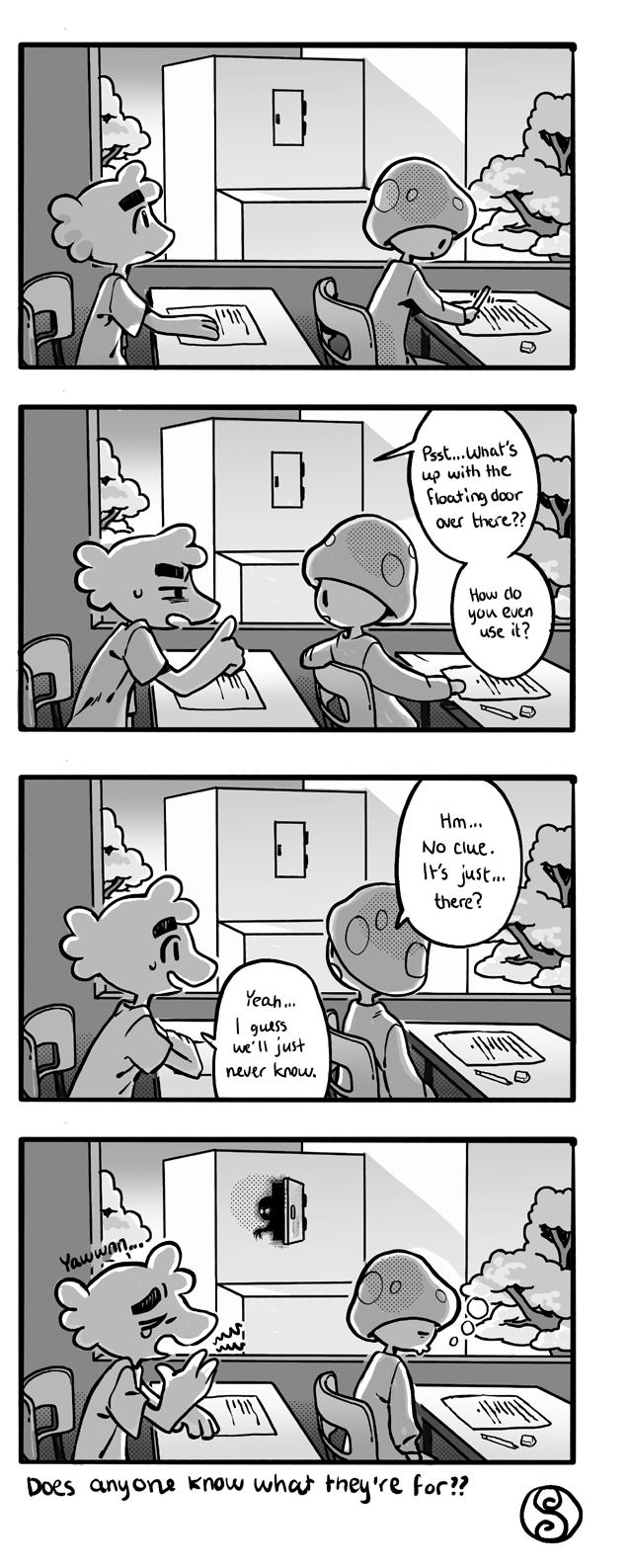
CURIOSITIES 29
Curiosities by TAMARA GALINATO Curiosities Editor
COMIC BY SAYA HIDAKA-MASSICOTTE @4A4K4A
HOROSCOPES
I had prepared a text all about the coming of spring and new beginnings, full of poetic musings. However, as the idea for the horoscopes came to me in a vision (thank you, Khadija), I realized that I had more important things to share. I LOVE ROCKS. I have my own little collection of crystals. I even have a collection of rocks that my friends have brought me from their vacations. I love rocks. Why wouldn’t you like rocks? Anyway, I have hidden a secret message amongst the cryptic horoscopes (which seem to become increasingly confusing). I find that finding the message is easy when all the signs work together ;) Good luck my dear readers, and I love you <3
ARIES (MAR. 21 - APR.19)
Labradorite. Stop overworking yourself. The work will get itself done eventually; using every breathing moment you have to work is not the solution. Take a self-care day, you deserve one. Buy yourself a silly little treat along the way ;)
TAURUS (APR. 20 - MAY 20)
Onyx or Obsidian? I’m giving you the choice, my dear birthday celebrant <3 You may be faced with a difficult situation this month. My advice to you is to always listen to your heart (or maybe your stomach if you’re hungry). What you are looking for is already in front of you.
GEMINI (MAY 21 - JUNE 20)
Vanadinite. I see that you have your mind set on a goal. With proper organization and determination, I know that you will achieve it (as you always do). This is your sign to go for it! Stay ambitious, Gemini ;)
CANCER (JUNE 21 - JULY 22)
Epidote. Take some time to reflect on the past as you may be struck with some clarity on a situation. Is what you desire what you actually need? On the other hand, you are attracting the energy you radiate. Do whatever you wish with that piece of information.
LEO (JULY 23 - AUG. 22)
Tourmaline. Do you understand? You probably don’t but if you said yes then I salute your confidence (even I don’t understand). This month is filled with inspiration and creativity. Dare to do the things you’ve been wanting to try — don’t limit yourself.
VIRGO (AUG. 23-SEPT. 22)
Hematite. Stay grounded: I quite literally mean it. You need some floor time, Virgo. If you’re not a floor person, then go lie on the ground outside with the sun and reconnect with nature. This time spent grounded will help get rid of negative energy..
LIBRA (SEPT. 23 - OCT. 22)
Emerald. The truth shall be unveiled… That sounds rather cryptic but whether it be about love or a secret (a secret love?), it will all unfold when the time is right. In other news, I see an expensive purchase in the near future.
SCORPIO (OCT. 23 - NOV. 21)
Peridot (I’ve always read it as “periodt” for some reason). Don’t try to fix what isn’t broken, repair instead what is broken (like Dawson is doing with the escalators). This month brings a sense of calmness alongside the summer vibes — what a combo!
SAGITTARIUS (NOV. 22 - DEC. 21)
Lapis lazuli. This month, you will be intellectually stimulated (go do my crossword) and challenged. You are strong and courageous so you don’t fear the challenges coming ahead
CAPRICORN (DEC. 22 - JAN. 19)
Aventurine. I think it’s time for an adventure. Do something new. It can be as simple as tasting a new drink or trying a new hobby. Moreover, good luck is heading your way! Altogether, it’s positive vibes for this month. Don’t you love it when the stars align in your favour?
AQUARIUS (JAN. 20 - FEB. 18)
Nephrite. Keep both your feet on the ground. It’s all about balance. Whether it be balance with your social and work life or balance between other aspects of your life, it is important to find what works for you :)
PISCES (FEB. 19 - MAR. 20):
Topaz. It’s time to go out and enjoy the sun! Go on a walk and breathe in some fresh air. Take this month to recharge and motivate yourself for the challenges ahead. But don’t look that far ahead either, simply live in the moment instead.

ANSWER TO LAST MONTH’S CROSSWORD
SUBTEXT PRESENTS: THE RISE OF FEMINIST HORROR
By Lou Tremblay, written for Justine McLellan’s Explorations in Cinema and Communications
It is a well-known fact that the horror genre has not been particularly kind to women. In the past, horror films often have offered tropes, such as the “Final Girl” or the “Damsel in Distress” tropes, that seem to shame and belittle women. However, in the last few years, women filmmakers have started to reclaim the horror genre to represent the anxieties and fantasies that often come with womanhood. Concepts and themes like the monstrous feminine or sexuality have started to hold an important place in these women’s films. There are many that offer this new perspective of women in horror, but three films have already claimed their cult classic status: Jennifer’s Body (Kusama, 2009), Raw (Ducournau, 2016), and A Girl Walks Home Alone at Night (Amirpour, 2014).
Jennifer’s Body
Firstly, Jennifer’s Body is a 2009 dark comedy horror film directed by Karyn Kusama and written by Diablo Cody. The film centers around Jennifer, a student, as she gets possessed following a traumatic event and begins to kill and eat her male classmates. The film had a terrible reception when it first came out, due to the misleading marketing that promoted it as a sexy horror movie, because of the casting of Megan Fox as Jennifer, made for straight teenage boys. However, Jennifer’s Body did something that many horror films at the time didn’t: it offered an interesting perspective into rape culture and deviated from certain horror tropes. In Meaghan Allen’s essay “Her Body, Herself Rape-Revenge and the Desire for Catharsis,“ she explains this perspective: “Jennifer’s Body is about Jennifer the person coping with her extreme violation by using her sexuality to trap and consume those who once ‘consumed’ or objectified her body” (Allen 3). Many critics would describe Jennifer’s Body as a fantasy for straight men, when in fact, it was a fantasy for women who suffered from the objectification and the sexual violence of men (Grady). The film also criticizes many film tropes. Usually, in many classic horror tropes, purity and virginity are praised with tropes such as the “Final Girl.” Jennifer’s sexuality, however, isn’t a weakness but one of her strengths (The Take 00:05:20).

Raw
Secondly, the 2016 French film Raw directed and written by Palmes d’Or winner Julia Ducournau is a body horror film that also, through its violent imagery, explores feminist themes. The story revolves around Justine, a teenage girl from a vegetarian family, as she goes to veterinary school and is forced to eat raw meat for the first time. This leads to her craving of human flesh. The cannibalism in the film is used as a metaphor for Justine’s sexual awakening. The film explores sexuality in an interesting way as it shows how she tries to hide and bury her sexual feelings, which is shown in the film through her cannibalistic urges. Female sexuality has always been seen as taboo on screen. It is rare to see a healthy portrayal of it, especially with teenage girls, even in modern day media. In the Dazed article “Is Female Sexuality Taboo on Screen?” written by Alex Denney, director Carol Morney explains why it is so taboo: “Girlhood, and young female sexuality, has been so colonized by certain images and an unhealthy dose of voyeurism that it can become uncomfortable viewing, so it’s important that female directors and directors of photography get more chances to present insights into female subjectivity” (Denney). Raw is then an exploration and a visual showing of the fears of female sexuality and how much it can affect young girls.
WHAT IS SUBTEXT?
read the full essay, visit their website www.subtextjournal.ca or scan the QR code!
To
Subtext is an online journal that showcases the select writing of Dawson students on the topic of film and media. This wideranging journal features exemplary essays, film reviews, articles, interviews, screenplays, and video essays written by students.




32 THE PLANT MASTHEAD Mirren Bodanis Editor-in-Chief Sanad Hamdouna Cover Artist/Editor-in-Chief Defne Aliefendioglu Managing Editor Khadija Fatima Copy Editor Noah Alec Mina Graphic Designer Sarah Bensetiti Secretary Thomas Frenette Arts & Culture Editor Emma Caspi Voices Editor Sabina Bellisario-Giglio News Editor Ezra Bucur Creative Writing Editor Mia Gueli Visual Arts Editor CONTRIBUTORS Victoria Ormiston Leilah Doyle Leila Pozzi Dorji Dhatsenpa Angel Diamond Saima Mazumder Miranda Galley Kara Fusaro Christopher James Dimitriadis Paloma Torres Neus @1eft.sock Towa Di Profio Aurélie Moutien Maisem Alwahb Marc Pham Staff Writer Tamara Galinato Curiosities Editor Soraya Djia Social Media Manager Saya Hidaka-Massicotte Cartoonist Gloria Badibanga Staff Writer Juhaina Rauph Copy Editor Amanda Ajeneza Bana Science & Environment Editor Jade Gagné Sports Editor Clara Frey Staff Writer Raluca-Mara Mare Staff Writer Saya Hidaka-Massicotte Cartoonist CONTACT The Plant Newspaper Dawson College 3040 Rue Sherbrooke O Montréal, QC H3Z 1A4 2C.12 theplantnews.com theplantnewspaper@gmail.com @theplantdawson



































